I’ve read a huge number of comics this year, and mostly old stuff. But I’m also keeping up with newer comics, and whenever one of them strikes me as particularly interesting, it ends up in this little bookshelf instead of disappearing into the larger bookshelves.
If it’s not a floppy pamphlet. Or too big. So this blog post should really be called “The Most Interesting Comics from January to August 2015 That Aren’t Taller Than 20cm And Are Squarebound”, but that just doesn’t seem like a snappy enough title.
Let’s go!
An Iranian Metamorphosis by Mana Neyestani (Uncivilized Books)
I basically buy everything that Uncivilized publishes, mostly directly from the publisher, but they’ve gotten better distribution lately, so I’ve bought the last few from book stores.
Drawn & Quarterly has a pretty good track record, and Fantagraphics publishes a lot of swell stuff (but some not-essential stuff, too (although sometimes their faith in younger artists pays off, like with Daniel Clowes — I mean… Lloyd Llewellyn…)). But Uncivilized hasn’t published a single dud, I think.
This book is about an Iranian cartoonist who got put into jail for drawing a cartoon. And Iranian jails are as bad as you’d guess. It’s a quite powerful book, but the extended cockroach metaphor starts wearing a bit thin near the end. The trails and tribulations they went through to escape from Iran is really interesting, though.
Truth is Fragmentary by Gabrielle Bell (Uncivilized Books)
I just love Gabrielle Bell’s work. This is another collection of diary and travel stuff, and it’s as interesting as ever. Her stories are fun, but a great part of the appeal of these comics is definitely her drawing style:
The way she spots those blacks, and the way she characterises people distinctly without using caricature is great.
As always, not all of these diary entries are… er… totally true…
Walk Before Skeezix by Frank King (Drawn & Quarterly)
The great re-discovery of the last few years has been Frank King’s Gasoline Alley strip from the ’20s. It’s extremely readable, engaging and sometimes very funny.
This, however, is the earliest bit of the strip (before the baby Skeezix was introduced), and the jokes are mostly about car maintenance. Which is surprisingly fascinating from time to time, but some jokes are repeated too many times, and things don’t really progress much.
It’s an amusing book, but I’ve seen other people suggest that this volume is even better than the later ones, and I think that’s… not accurate.
Drama by Raina Telgemeier (Scholastic)
Comics for kids! Comics aren’t just for adults any more!
Telgemeier rules all sales charts for comics these days, which probably explains why I didn’t check her out earlier. If it sells that many copies, can it be any good?
And the answer is “yes”. It’s witty and cute.
The artwork doesn’t do much for me, though:
It’s pleasant and is easy to read, but it’s not my cup of tea. Even the colours are kind of unpleasant, with muted browns and beige dominating many pages.
But that’s not going to stop me from getting her older work.
Here by Richard McGuire (Pantheon)
In the early 90s (I think) McGuire did a short comic that blew everybody’s mind, and is probably the most influential comic on a per-page basis ever. In this book he expands that short comic into some hundred pages, and it’s glorious.
The idea is that we see the same section and angle on every page throughout the ages.
So we follow the development of this plot of land, and see various micro tales play out over the centuries. Like people stubbing their toes.
It’s a reading experience unlike anything else. And it’s really good.
Love and Rockets New Stories no. 7 by The Hernandez Brothers (Fantagraphics)
Speaking of good, Jaime Hernandez has seemingly had a renaissance the last few years. The Browntown/Love Bunglers stories really brought attention back to what wonderful comics he makes.
There’s nothing as stunning in this volume, but it’s still really, really, really good.
I mean really.
I used to find Beto’s stuff as interesting as Jaime’s, but Beto has made too many comics that haven’t really paid off the last decade. He sometimes seems more interested in thumbing his nose at his stooopid readers than saying anything interesting.
The stories in this volume are fine, though.
I’ve long had plans to re-read all of Love & Rockets, and this time I’m going to do it fer shure. I’ve sorted all the various series, and I have them all, it turns out. (Except the first self-published L&R#1.)
First Year Healthy by Michael DeForge (Drawn & Quarterly)
DeForge is a break-out art comics superstar, or something. His books are usually stomach churning and intense, but something does seem to go awry in this short work. For one, it’s more of a picture book than a comic:
It’s interesting, but not essential.
Which reminds me: You frequently see people express amazement about how many good comics are being published in the US these days. And it’s true: There’s a lot. But I’m also starting to get the impression that the current “new golden age” comics boom is waning. And it started a couple of years ago.
In the, say, five years previous to that, you have an amazing range of young people starting to do really noteworthy books. Books everybody had to rave about. People like Gabrielle Bell, Michael DeForge and Lisa Hanawalt. (And lots more.)
In addition, there was a sense of rediscovery of the past, with reprints of Gasoline Alley being the major one, but also new (and finally perfect) editions of work by Carl Barks, Charles Schulz and Hal Foster.
Older indie comics people also suddenly got a second wind, it seemed, with works like X’ed Out by Charles Burns and Love Bunglers by Jaime Hernandez. It also seemed like major publishing houses were giving away lots of money for a few years, until they discovered that things like Stitches probably wasn’t going to sell no matter how many people they got to review it.
These days? There’s a lot of good stuff being published, as you can see. Some of it’s brilliant. But there doesn’t seem to be any of those big break out works, like we almost got used to, these days.
I dunno. It might just be my perspective from way over here — a lot of stuff is seemingly only available at comics conventions, since distribution for quirkier works is spotty.
Oops. Nattering over. We return to the bookshelf:
Ur by Eric Haven (Adhouse Books)
This slim book is satisfyingly bonkers. It’s absurd and funny.
I mean, how can you not like “Man-Cat”?
The stiff, stilted drawings only helps with creating the creepy, bizarre atmosphere.
Hidden by Mirranda Burton (Black Pepper)
I spent February in Australia, and raided the comics shops there for local produce. I mean products.
Most of them were kinda “eh”, but Burton’s book is quite captivating. It’s about her working as an art instructor for people with ‘intellectual disabilities’.
There are so many ways a book on this subject can go wrong. And this book takes exactly none of those turns. It’s unsentimental, frequently funny and very engaging.
The artwork is very straightforward in a 70s American underground kinda way, and perhaps sometimes has too many talking heads for pages on end, but sometimes takes unexpected turns into whimsy:
Evig lycka by Klas Isaksson (Galago)
I try to raid Stockholm, too, but got to the good shop too late, so I had to go to the superhero store instead. There I found this book, which is pretty original.
Not the story, which is about young Swedes doing young Swede things (and dying), but the artwork.
It’s 450 pages of this kind of stuff.
At first I thought it would be impossible to keep the characters separate, but that turned out to be no problem. After a while, these squares started to look normal.
I was slightly more flippant about the storyline than was warranted. It’s pretty moving. Someone should publish this in English.
Showa 1944-1953 by Shigeru Mizuki (Drawn & Quarterly)
D&Q doesn’t publish many non-good books, but their Japanese stuff seldom fails to disappoint.
Showa is very interesting when dealing with the Japanese atrocities during WWII, but mostly fails when dealing with the personal story of the author. He relentlessly pictures himself as a nose-picking slacker, and it gets really tiring after a while.
Probably not as tiring as being a soldier in the Japanese army, but it’s still not exactly thrilling. His drawing style, which shifts between super-detailed backgrounds (traced from photos?) to the goofy cartoonish characters is also distracting.
The Motherless Oven by Rob Davis (Selfmadehero)
A quite strange science fiction-ish tale about three teenagers on a quest to escape an adult world. Or something.
It’s the kind of world where it rains knives and parents are typically bakelite ovens.
You know.
It’s quite good, although the artwork does nothing for me.
Oglaf Book Two by Doug Bayne and Trudy Cooper (TopatoCo)
Oglaf is serialised on the web, and I read it every week and snicker to myself.
Reading the collections is a different experience. There’s a cumulative effect where everything gets funnier and funnier until you’re gasping for breath.
At least that’s what happens to me.
I cannot recommend Oglaf highly enough. Beautiful art, hilarious jokes, and quite, quite sexy. Get thee unto the store and buy, buy, buy.
Last of the Sandwalkers by Jay Hosler (First Second)
I’ve followed Hosler’s career for a long time now. His thing is basically adventure stories that teach you something about biology. Clan Apis was about bees. Sandwalk Adventures was about a mite that lived in Charles Darwin’s eyelashes, and that taught us about, er, mites, eyelashes and evolution.
You’d think this kind of thing would get boring, but they’re genuinely funny and exciting.
So when I read that Hosler finally had a new, hefty book out I was excited.
Then I noticed that it was to be published by First Second. Uh-oh. Would his charming, but low-drama, kind of storytelling survive the First Second editorial grinder?
Yes, but mostly no. Instead of teaching us a lot about insects, this is all one big adventure with drama. Not quite “So Much Drama”, but way more than usual. With hand-wringing villain and everything.
So it’s not Hosler’s best work. It’s probably his worst work. It’s still worth reading, I think. And I have no idea whether it was the dreaded First Second Miasma that made this book almost fail, or whether it was all Hosler’s doing, but it’s pretty typical. First Second is where good artists go to publish their not-best stuff.
Me Likes You Very Much by Lauren Barnett (Hic and Hoc)
Hic and Hoc is an exciting new publisher that seems to publish mostly younger artists? Their output is a bit hit and miss, but the hits are pretty good.
Like this one. It’s a book of very silly jokes, mostly involving animals and produce saying incongruous stuff.
There’s definitely a cumulative effect. I remember laughing quite a bit when reading this book, but looking at just single pages now while typing this, I’m just tittering a bit.
Den usynlige lesbiske by Océanorosemarie and Sandrine Revel (Cobolt)
This is a Danish translation of “La lesbienne invisible”. The storyline is fine — it’s amusing, has engaging characters and moves nicely along.
But the main attraction here is the artwork:
Me likes this very much.
Palookaville 22 by Seth (Drawn & Quarterly)
Geez, there’s a lot of D&Q on this shelf…
Anyway, Palookaville is one of the last remaining stalwarts of “periodical” American indie comics, although it’s now morphed into book size.
That means that Seth has a lot more pages to fill, and the last issue seemed quite filler-ish. I mean, the stuff was nice to look at, but…
In this issue, though, in addition to continuing the Clyde Fans serial, we get a hefty chunk of autobio comics, where Seth ruminates on his childhood and his nostalgia.
It’s good. It’s really good. It’s very nice to see Seth doing this sort of work again.
Borb by Jason Little (Uncivilized Books)
This book was a great surprise. It’s about a homeless man and his horrible, horrible travails.
They’re also horribly funny, but you kinda feel bad about laughing at his misfortunes. Which I think is part of what Little tries to do here: To make us feel sympathy for this poor guy who bumbles his way through smoking crack and losing his teeth.
Moose by Max de Radigues (Conundrum)
This book has gotten a bit of attention around the interwebs, and it’s what people would call “powerful” while looking around for other words to describe it.
It’s the story of a kid that’s bullied beyond endurance, and it doesn’t go where you’d think a story of this kind would go.
It’s good. The artwork is kinda James Kochalka-ish, which isn’t a bad thing.
What Did You Eat Yesterday? vol 8 by Fumi Yoshinaga (Vertical)
This series is about two boyfriends who live together. And one of them cooks. It’s mostly about cooking, although there is usually a plot of some kind also going on.
The most dramatic moments in the series is when Kakei finds really cheap, say, radishes in the store, but he has to buy too many of them to eat before they go bad, so what to do!??
It sounds like an absurd premise, but it works. It’s pretty funny and engaging in a soap opera like way, but with the drama and stakes turned way, way down. It’s soothing.
In the beginning I mostly skipped reading the pages and pages and pages of food preparation, but now I like even those.
I can see this series continuing forever, and I hope it does. I’ll be buying them all.
The Spectators by Victor Hussenot (Nobrow)
This is a meditation on, er, life or something.
I read this book just a few weeks ago, and I can’t really remember anything about it.
But look at the artwork!
That’s tasty, man.
Sea Urchin by Laura Knetzger (Retrofit/Big Planet)
I’ve been on all the Retrofit kickstarters, I think, and the comics haven’t all uniformly been great. Ahem. But quite a few are good, like this book by Knetzger.
It’s about depression and stuff, and is pretty interesting.
The artwork is a quirky mix of styles. Thumbs up.
Omrokering by Tim Ng Tvedt (Jippi forlag)
Hey, a pamphlet snuck into the bookcase! But it’s a doozy.
I don’t think anybody gets a prize for guessing that Tvedt has seen comics by Chris Ware and Richard McGuire (and perhaps Joost Swarte), but what he does here is just brilliant.
There isn’t a story line as such, but it reads so well. There’s a rhythm flowing through the work that’s amazing. I’ve never read anything that had such a metronome going. The words are repetitive and mesmerising, driving you through it at a high clip.
I don’t know how well it’d translate, but somebody should give it a try, I think.
Well, that’s it. The bookshelf is now empty, evening is approaching and my legs hurt from sitting on the floor all day this sunny Sunday.
Hope you’ve enjoyed this meander through some recent comics.
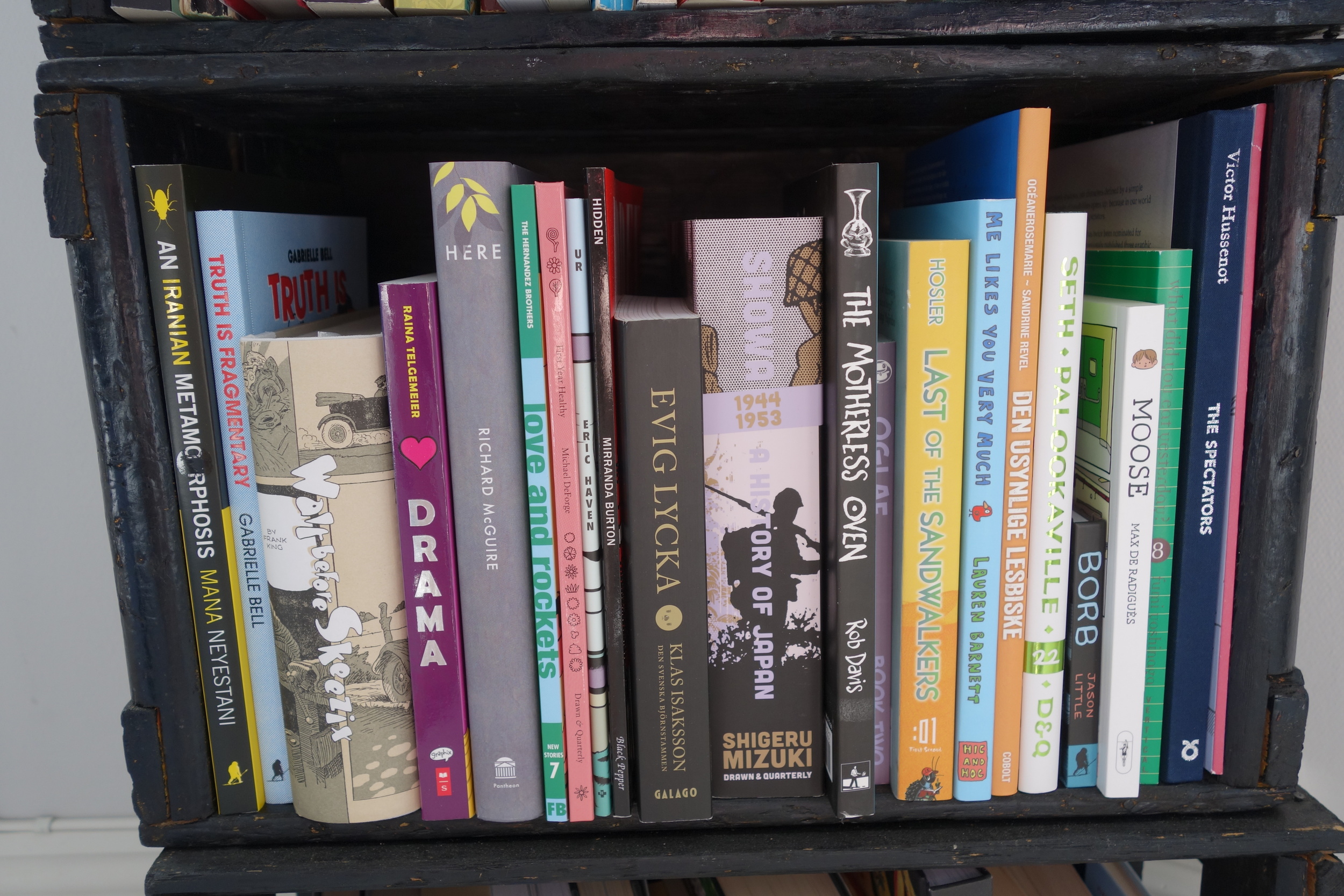
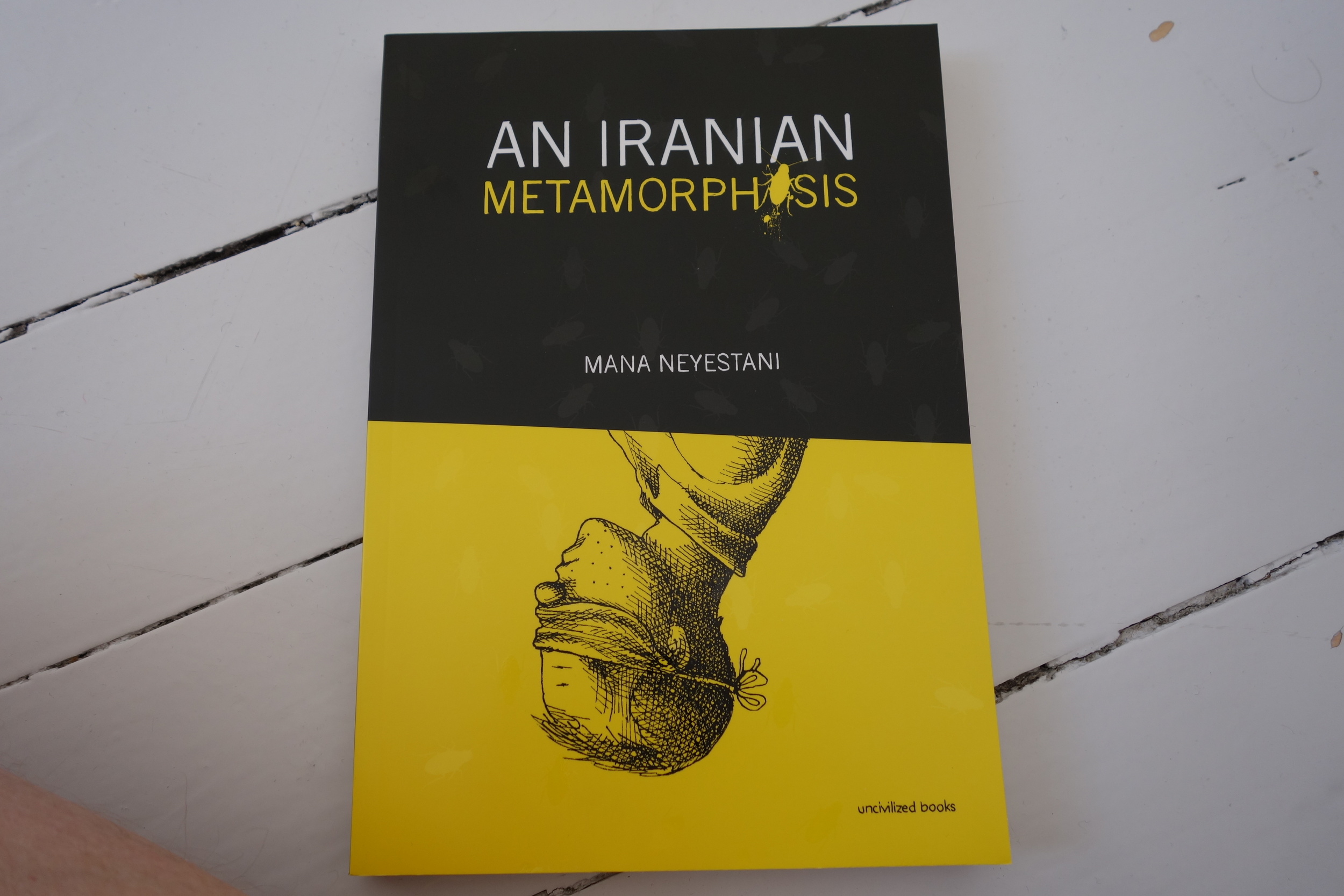
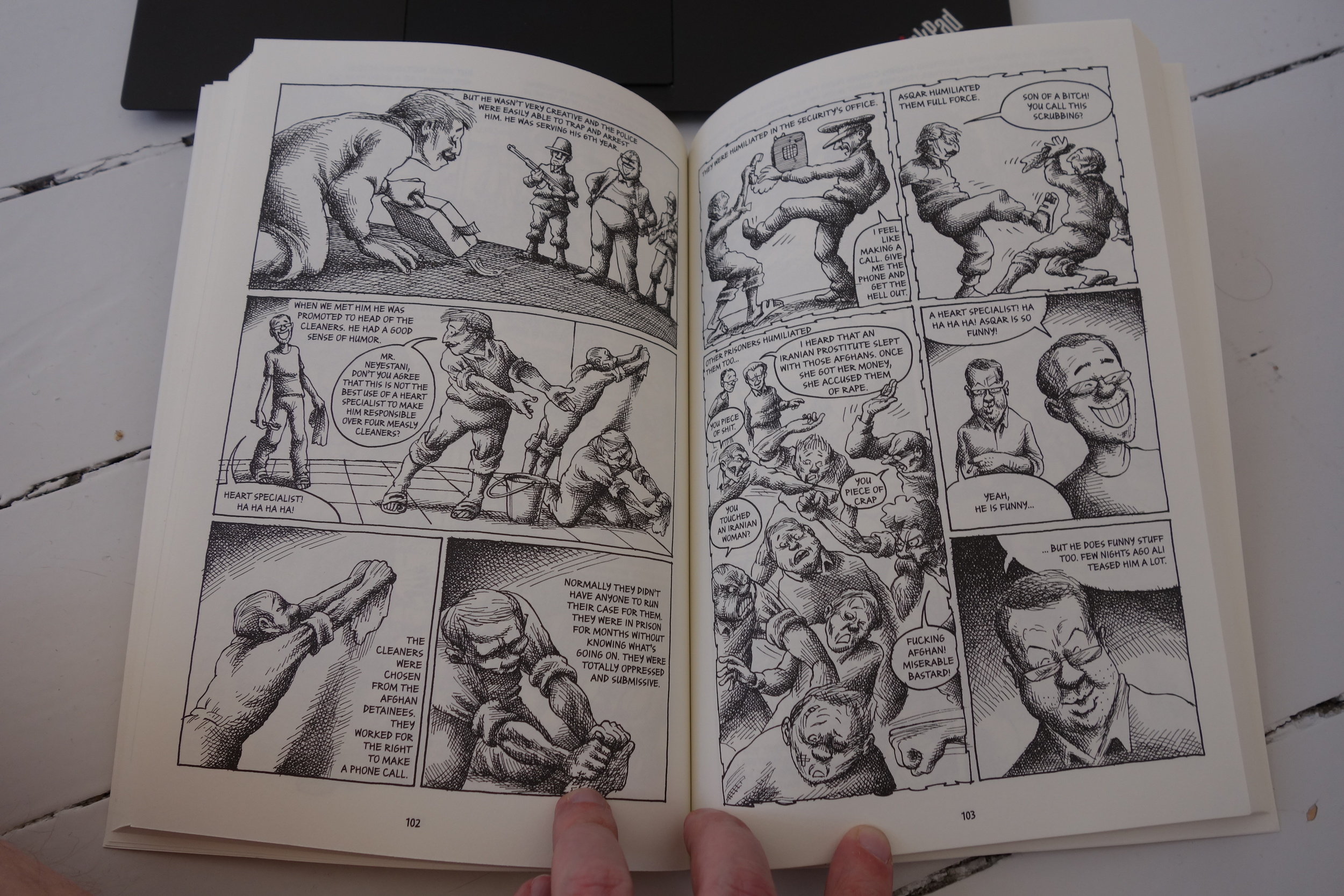
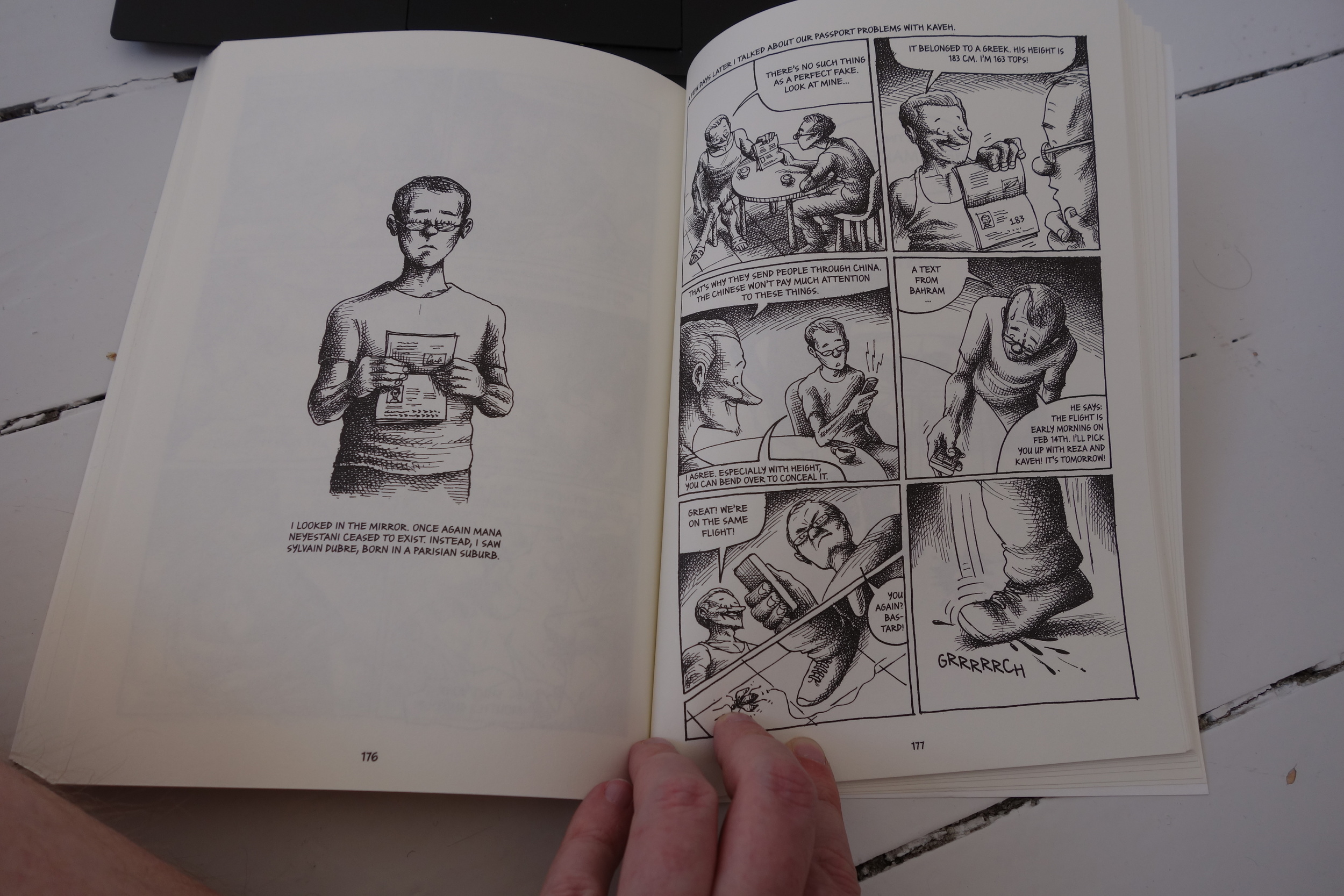
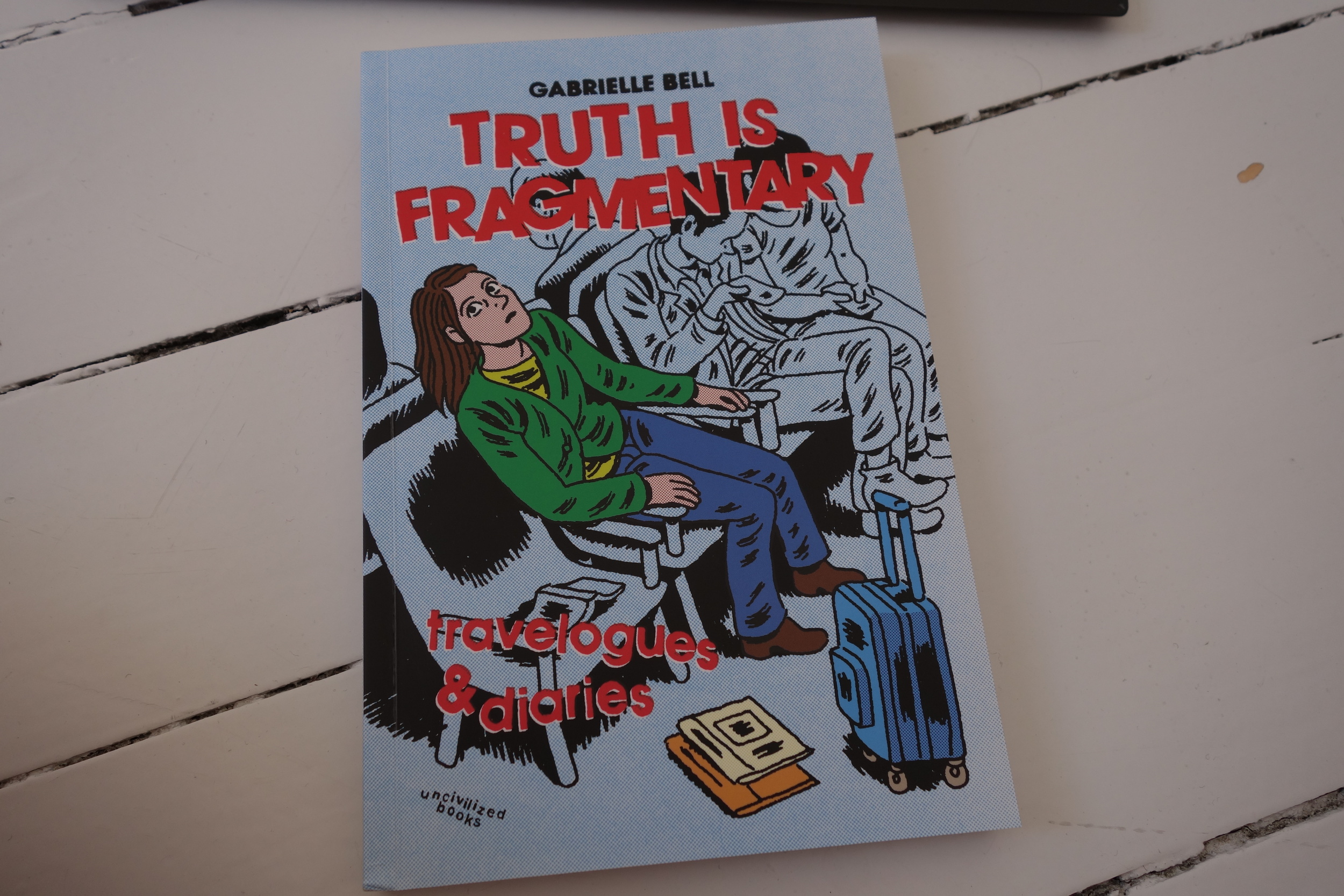
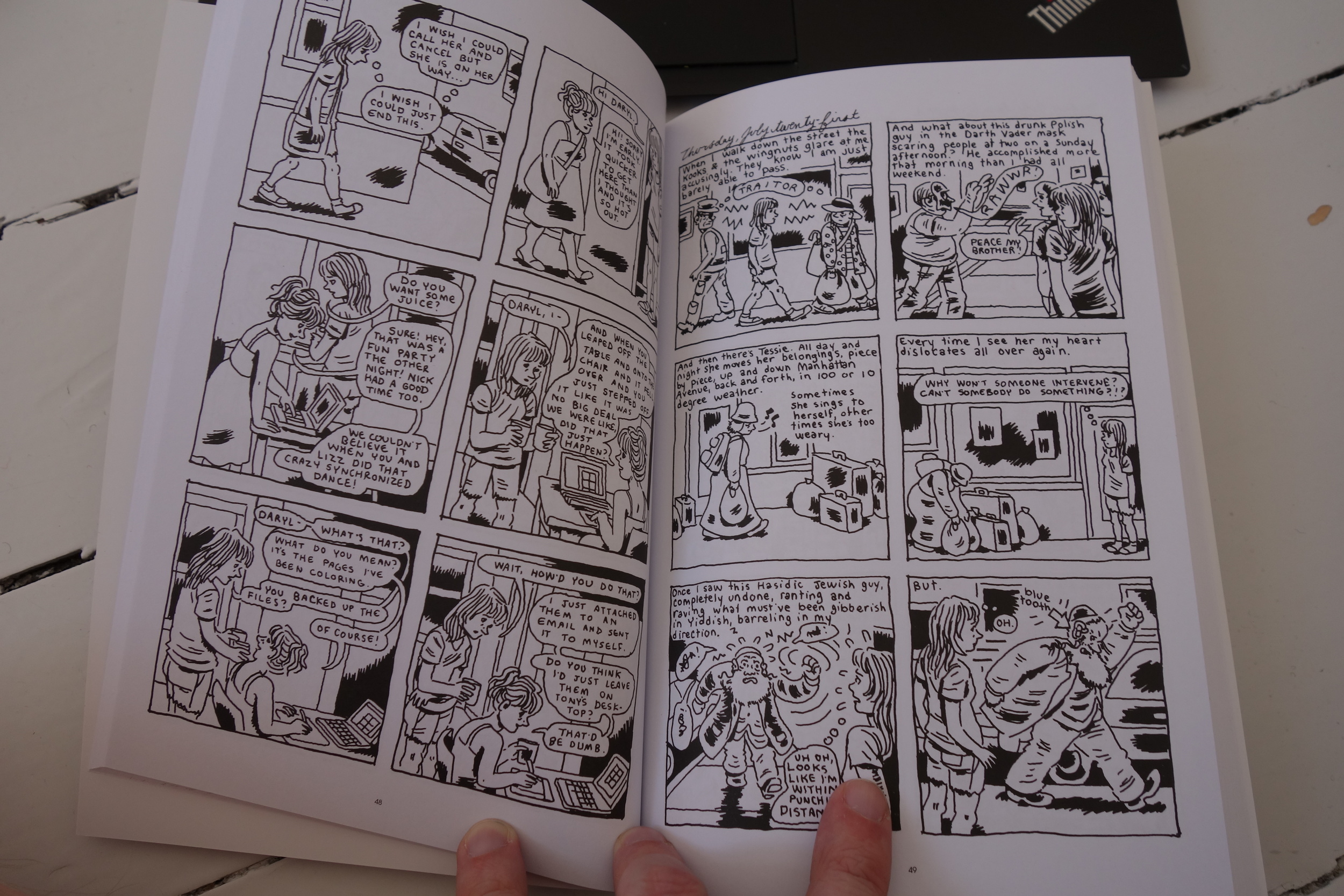
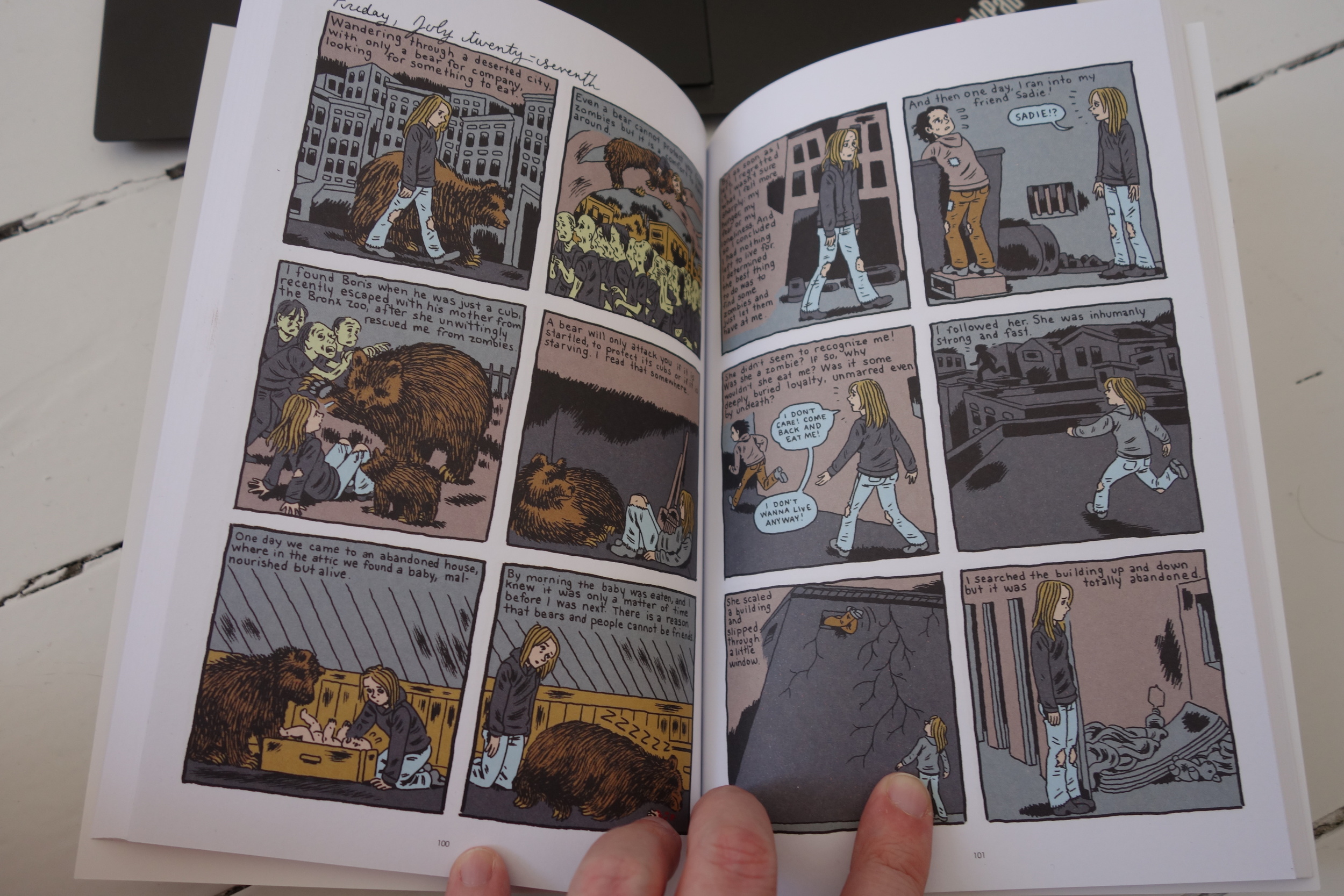

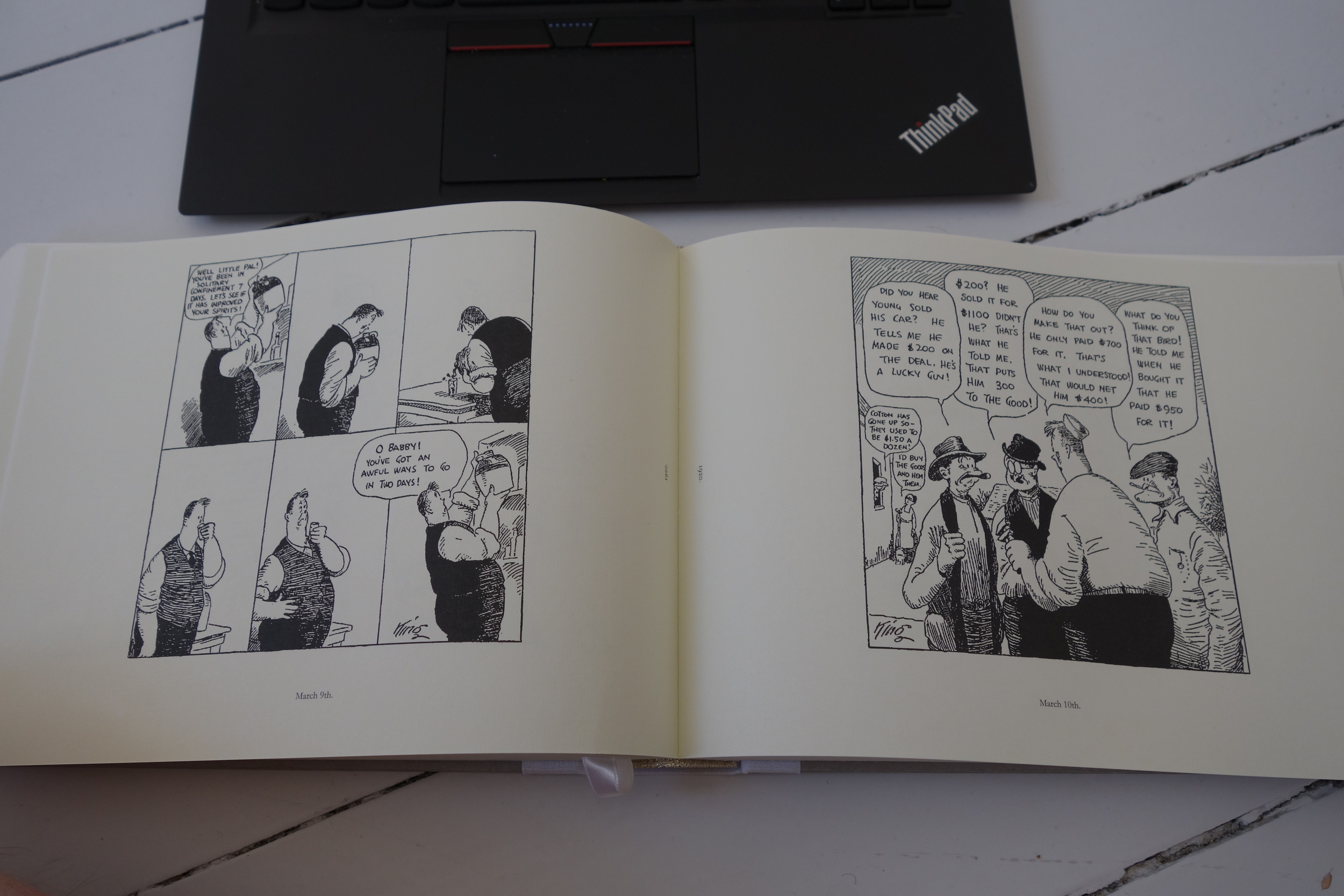

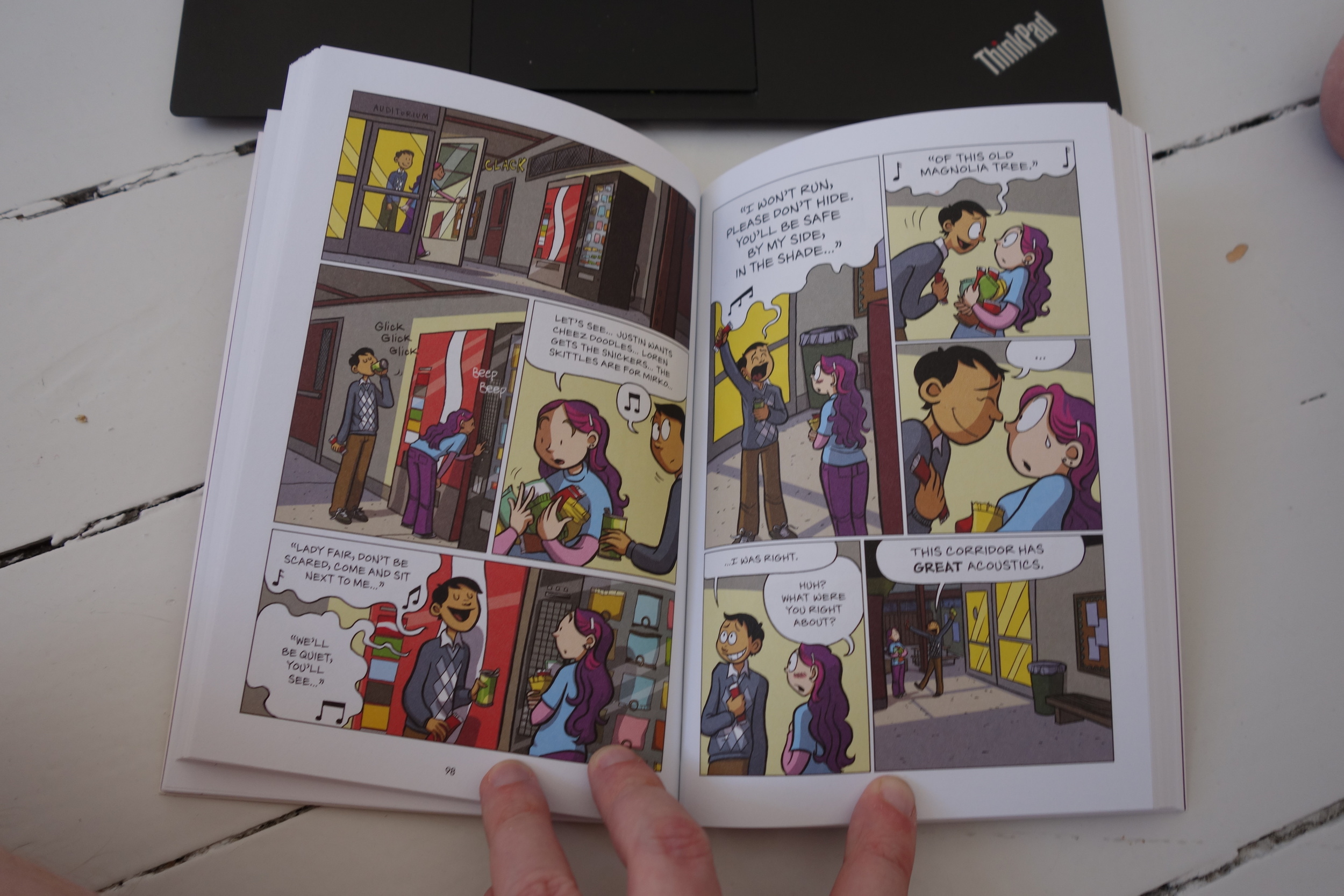
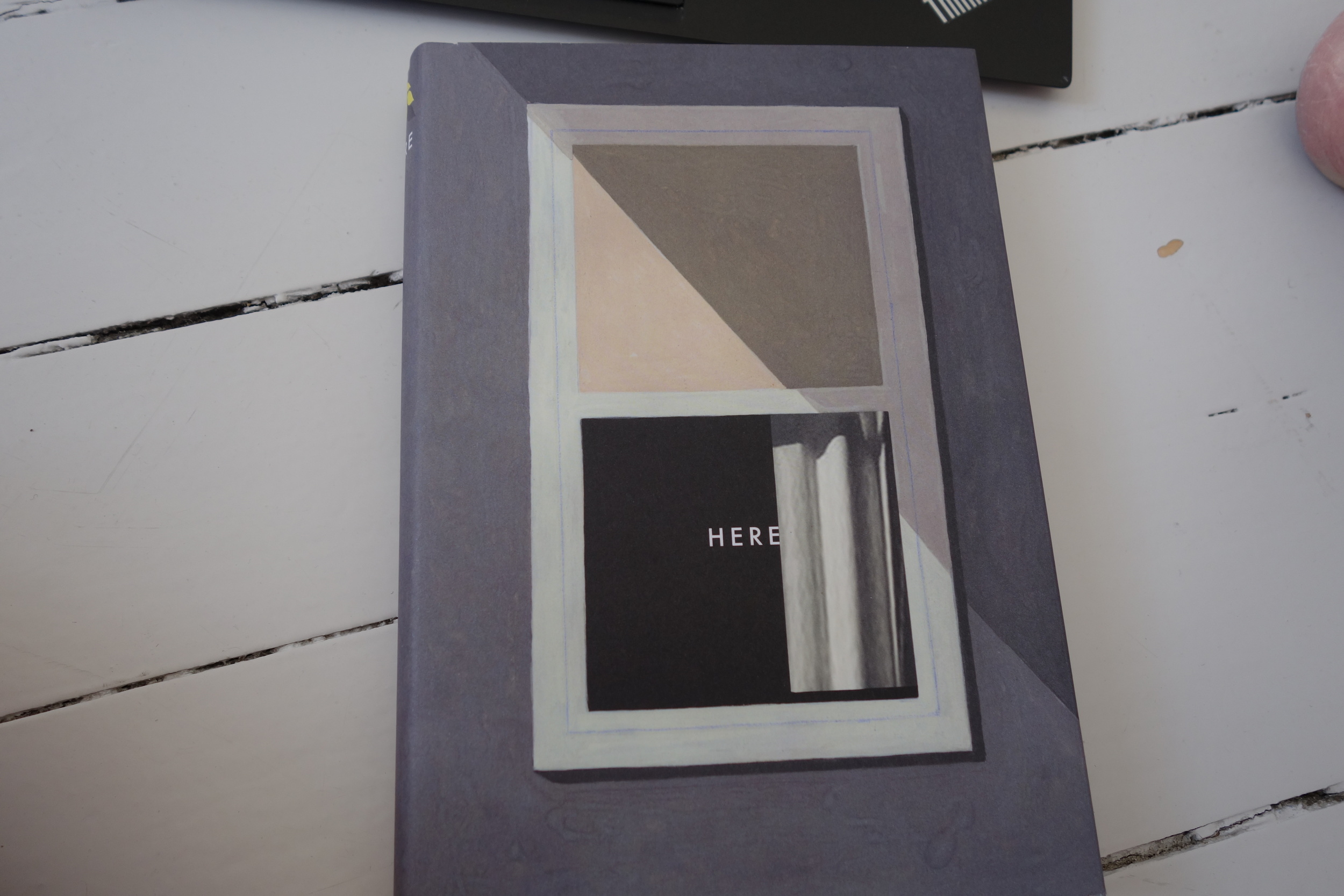

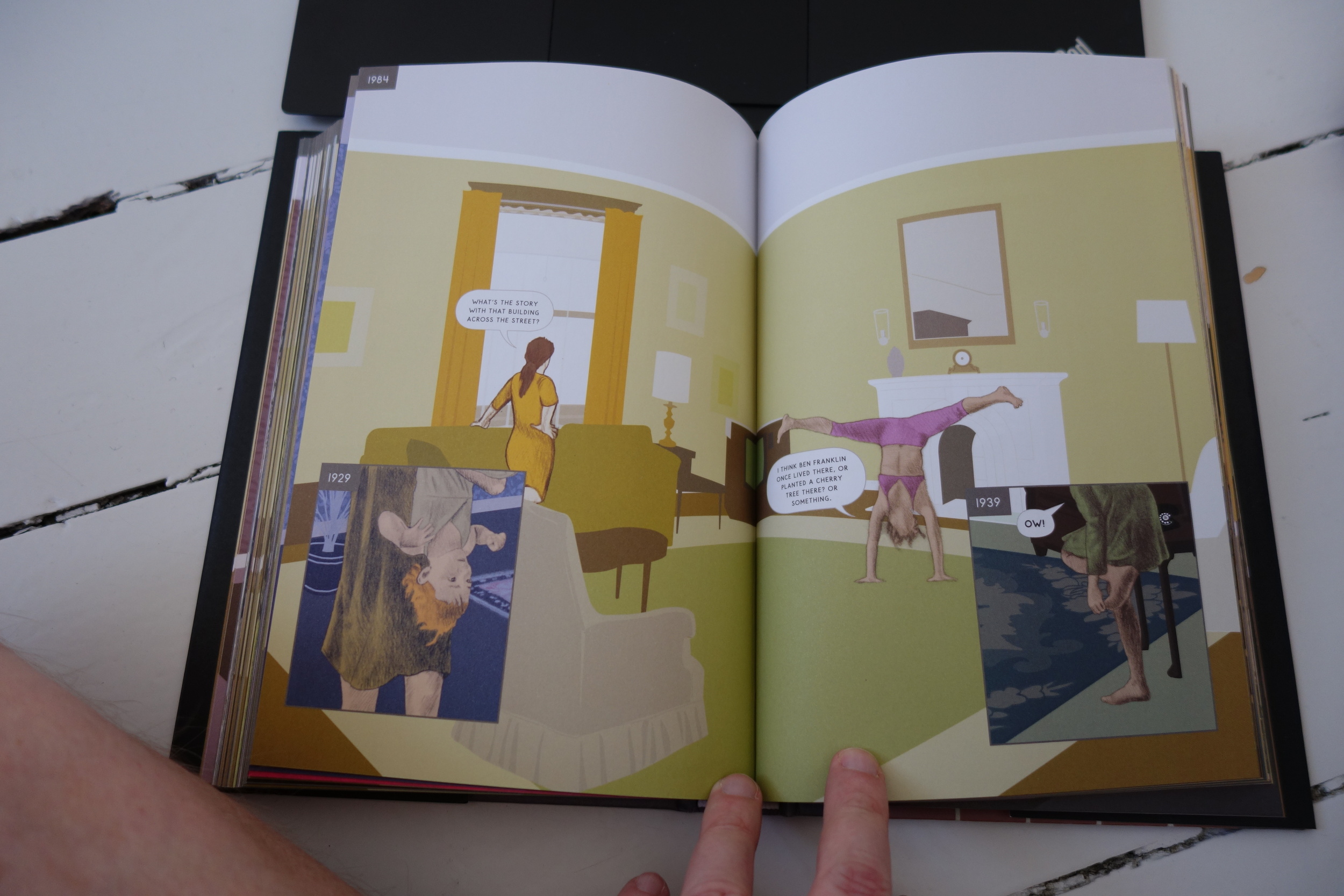
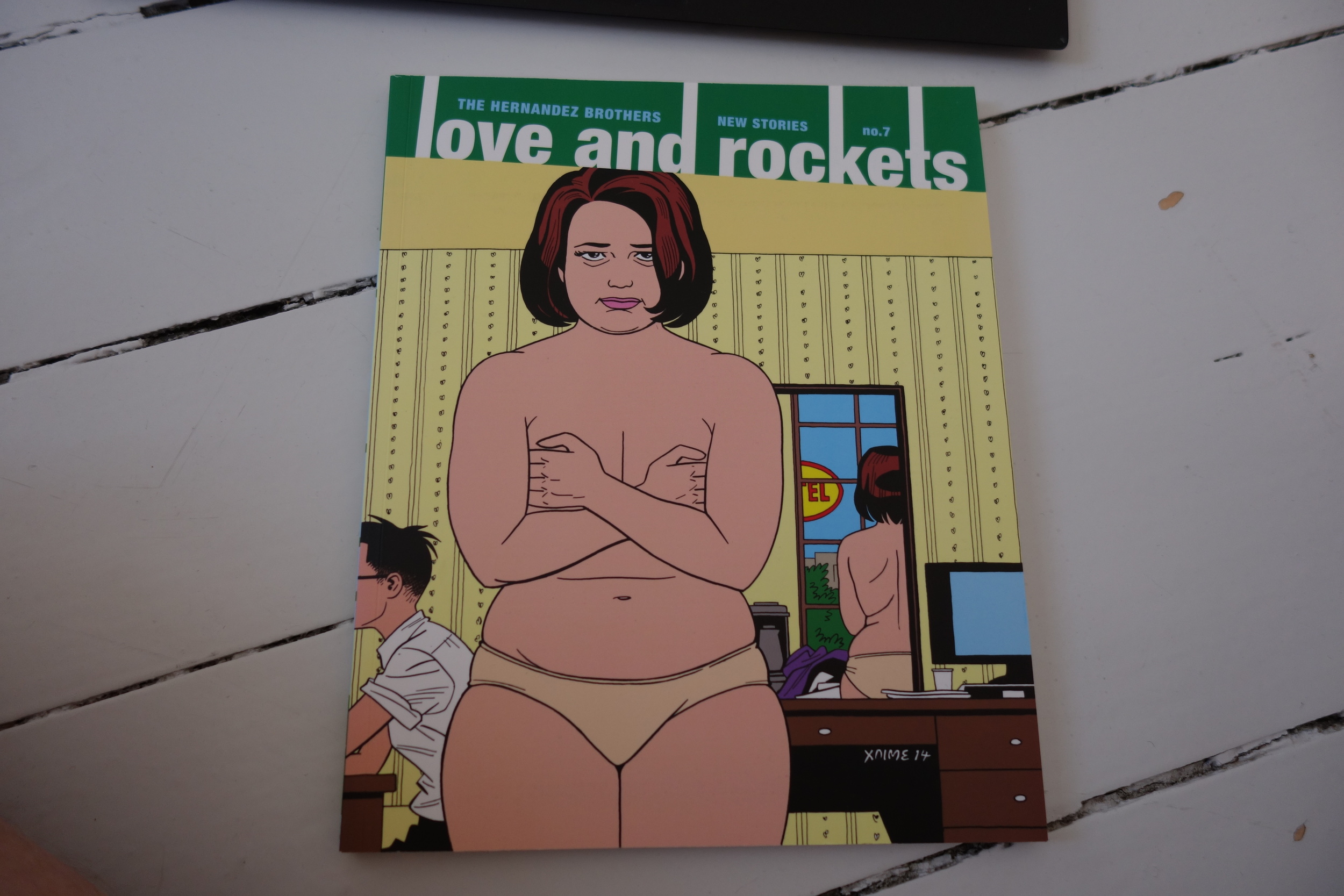
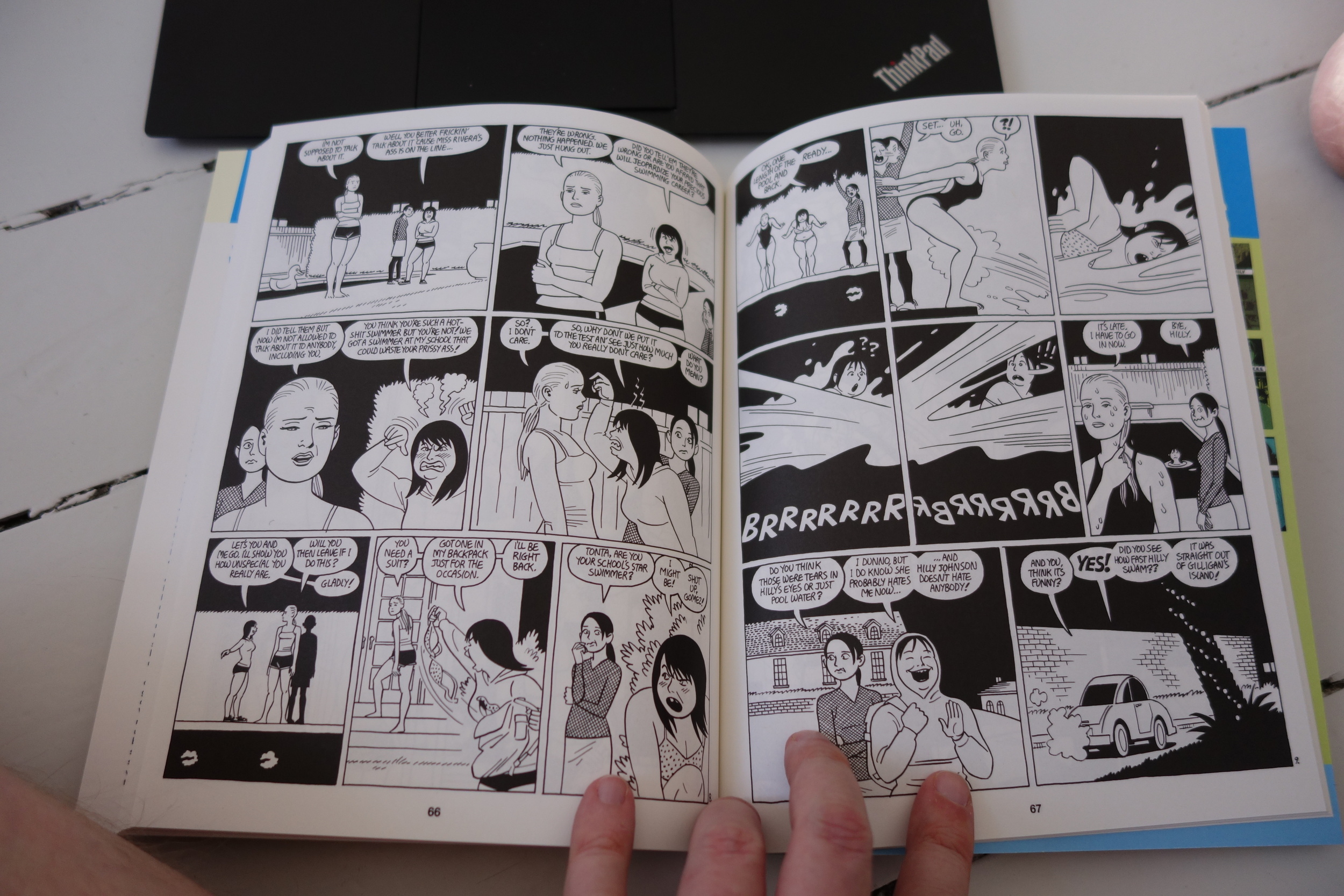
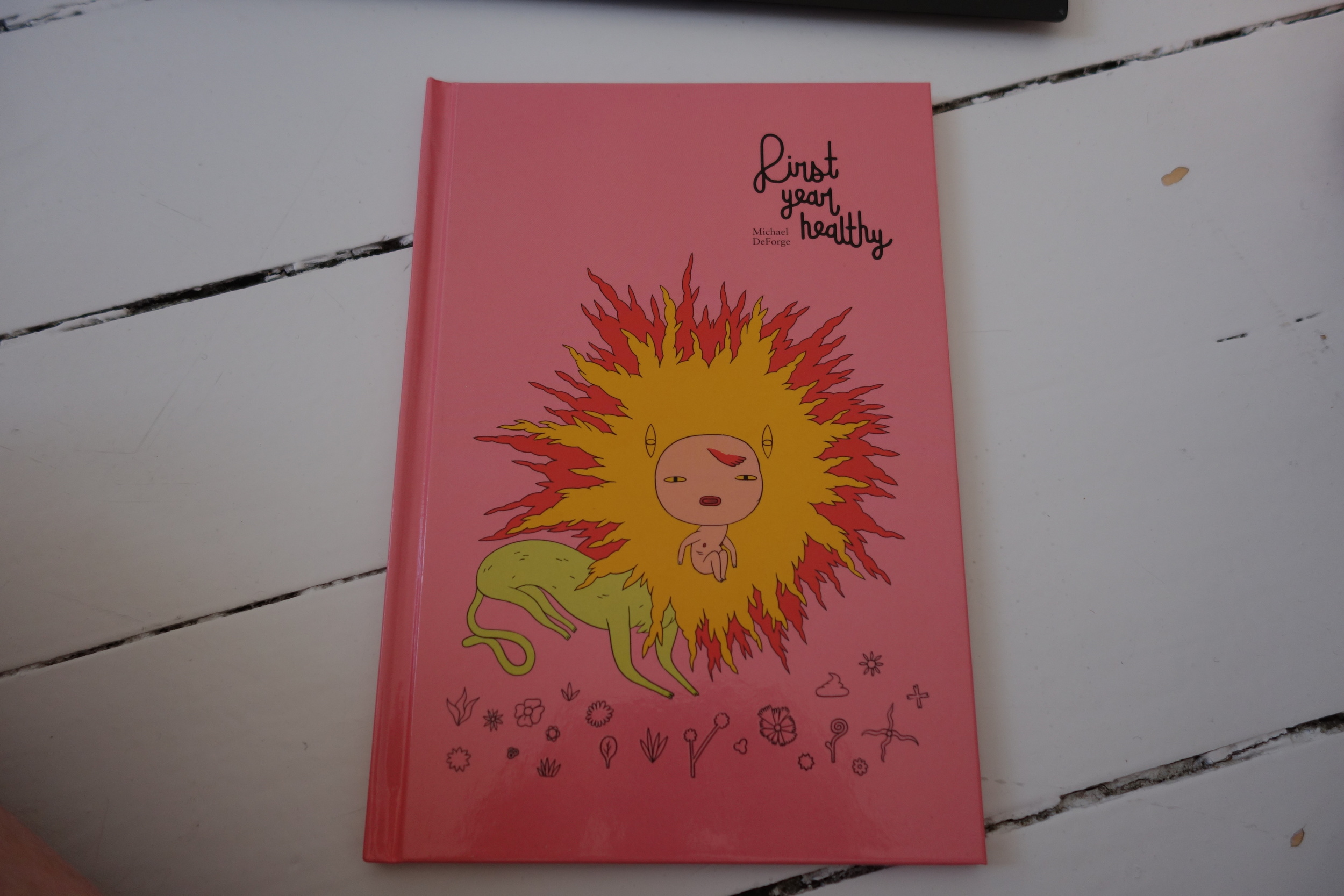
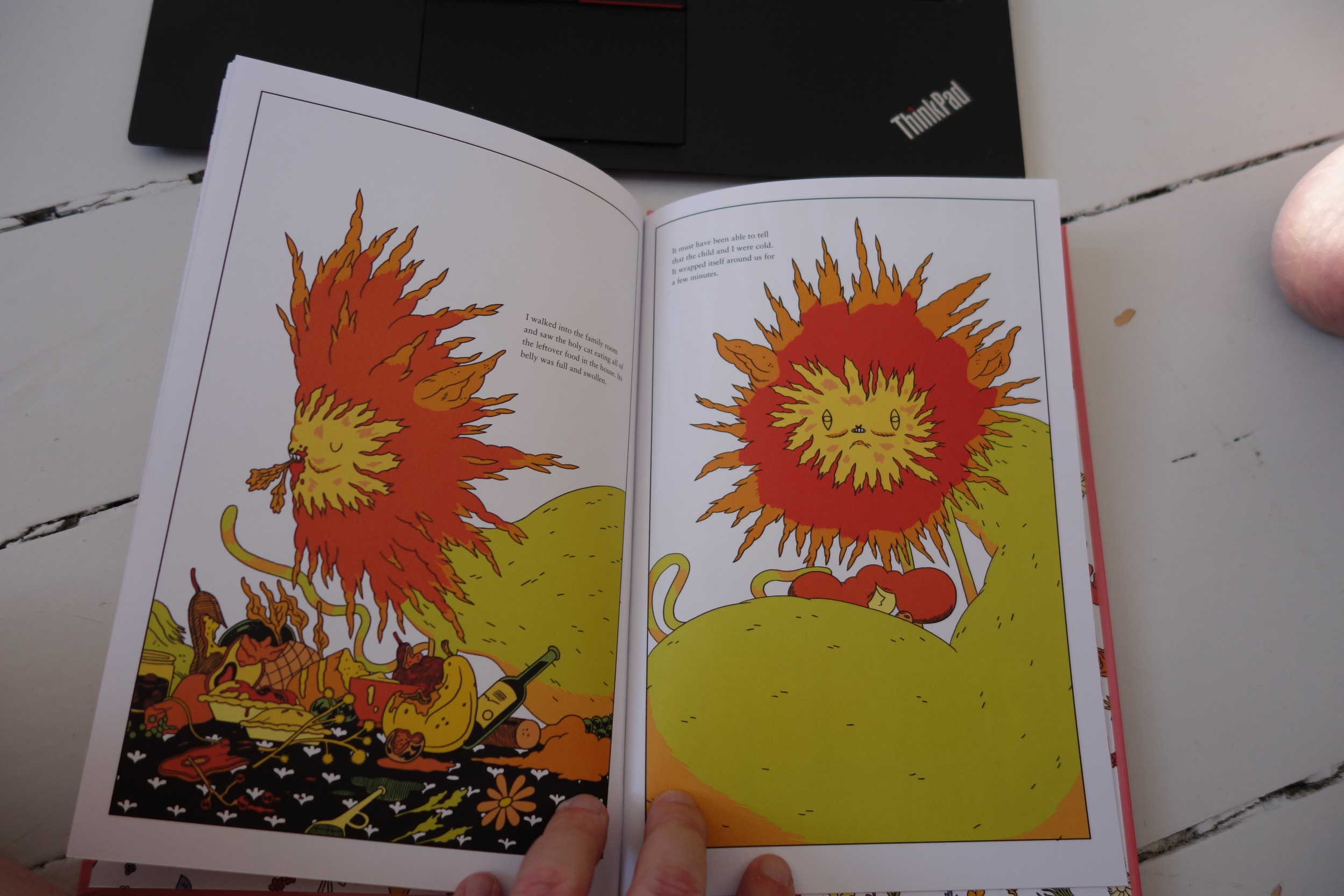
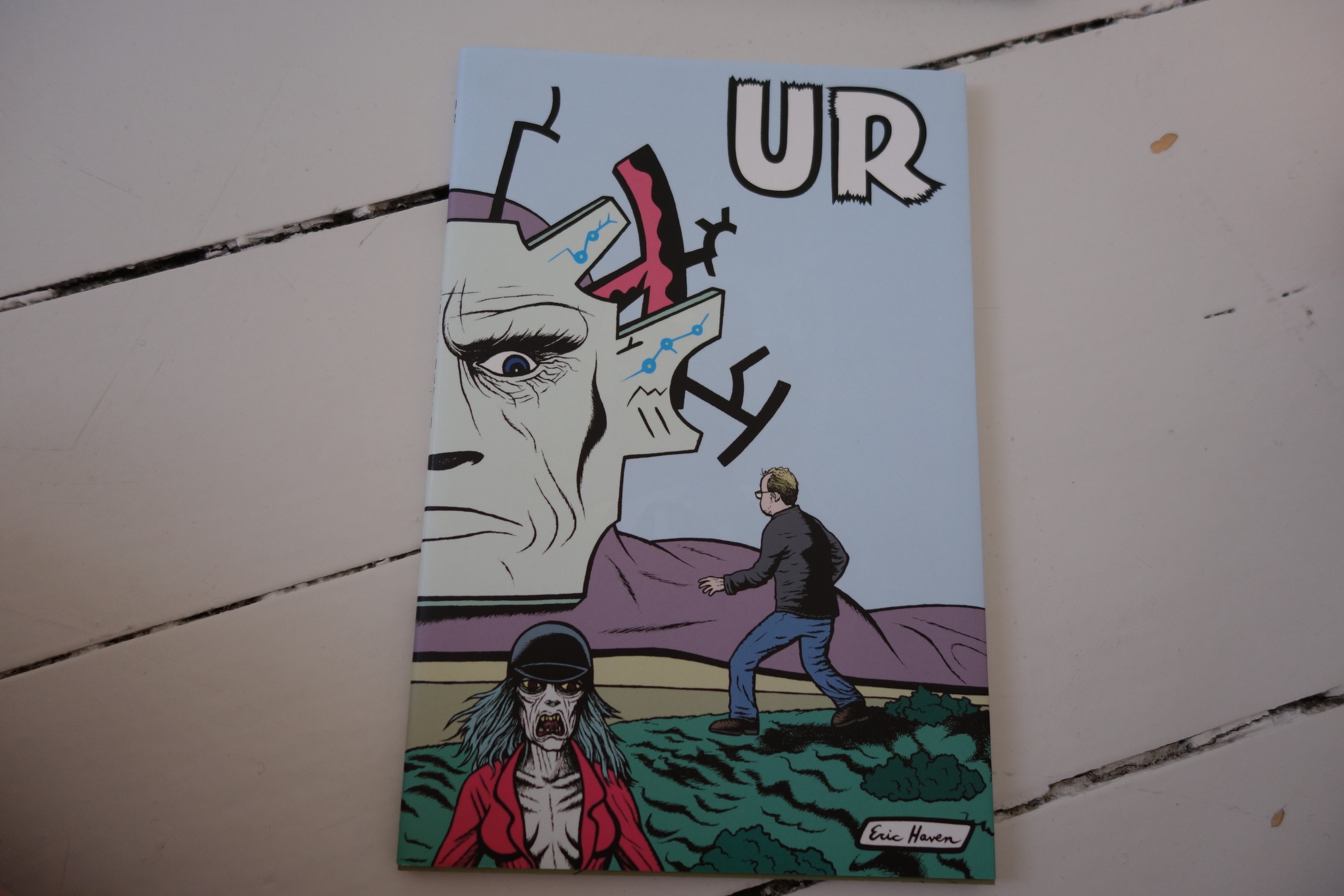
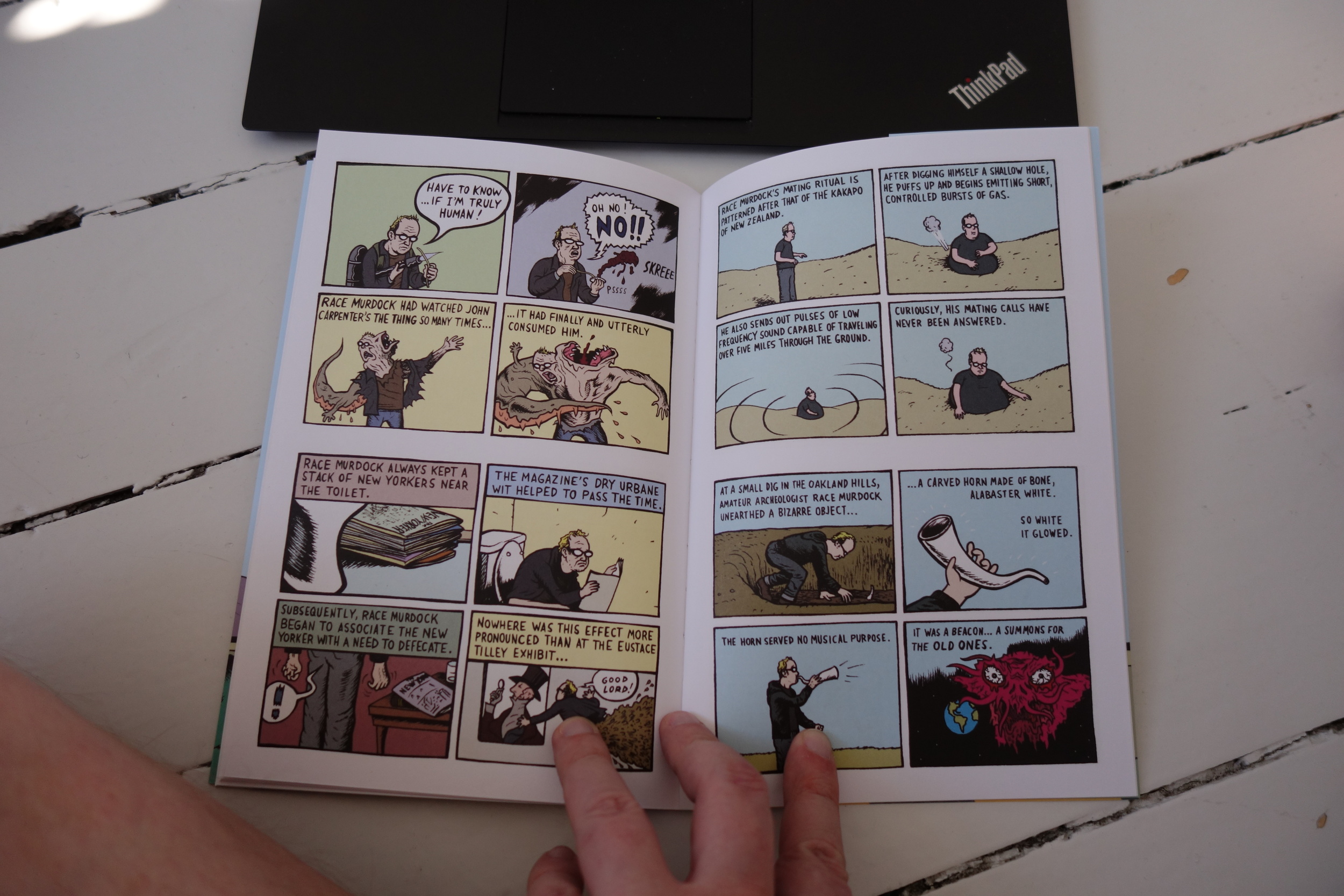
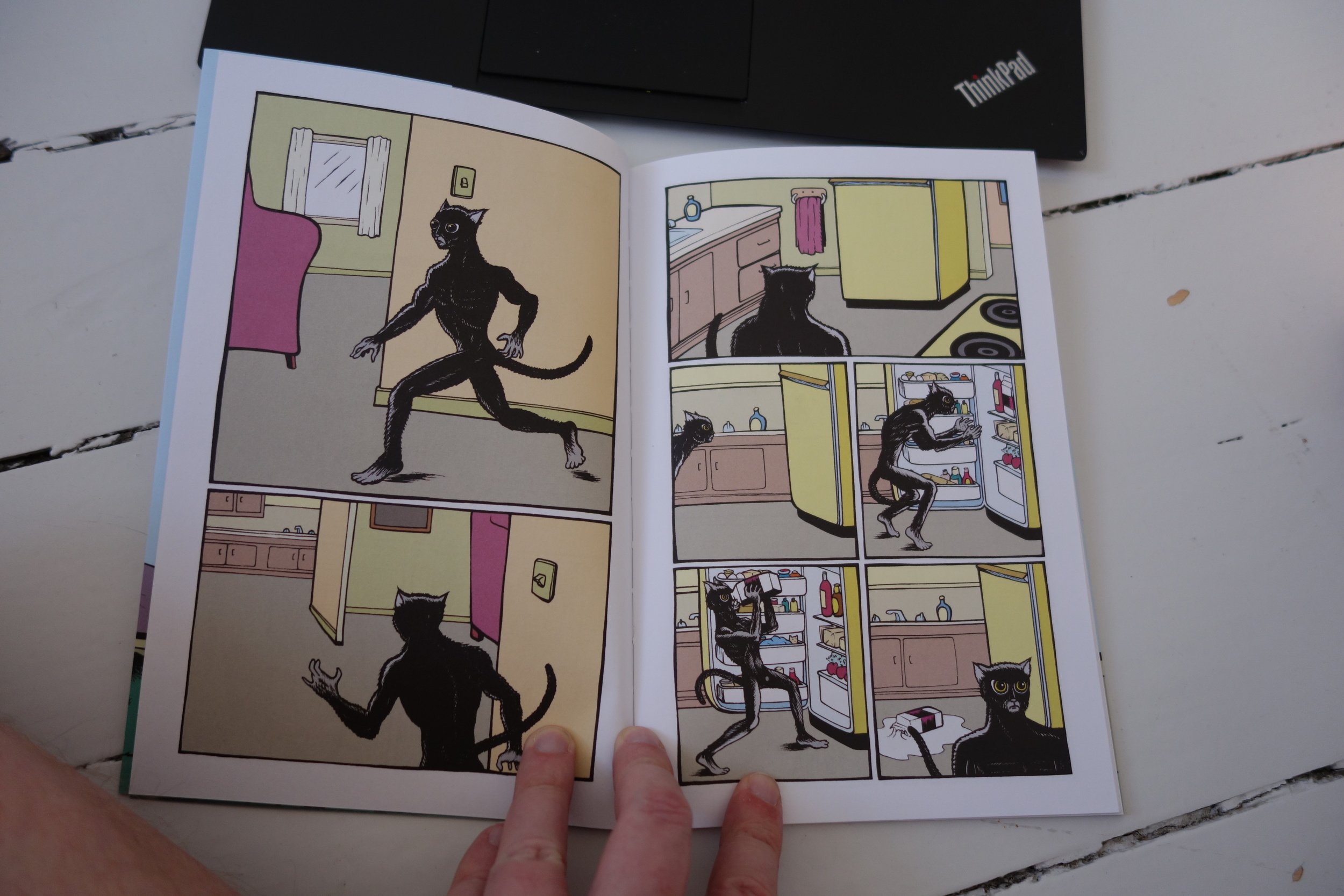
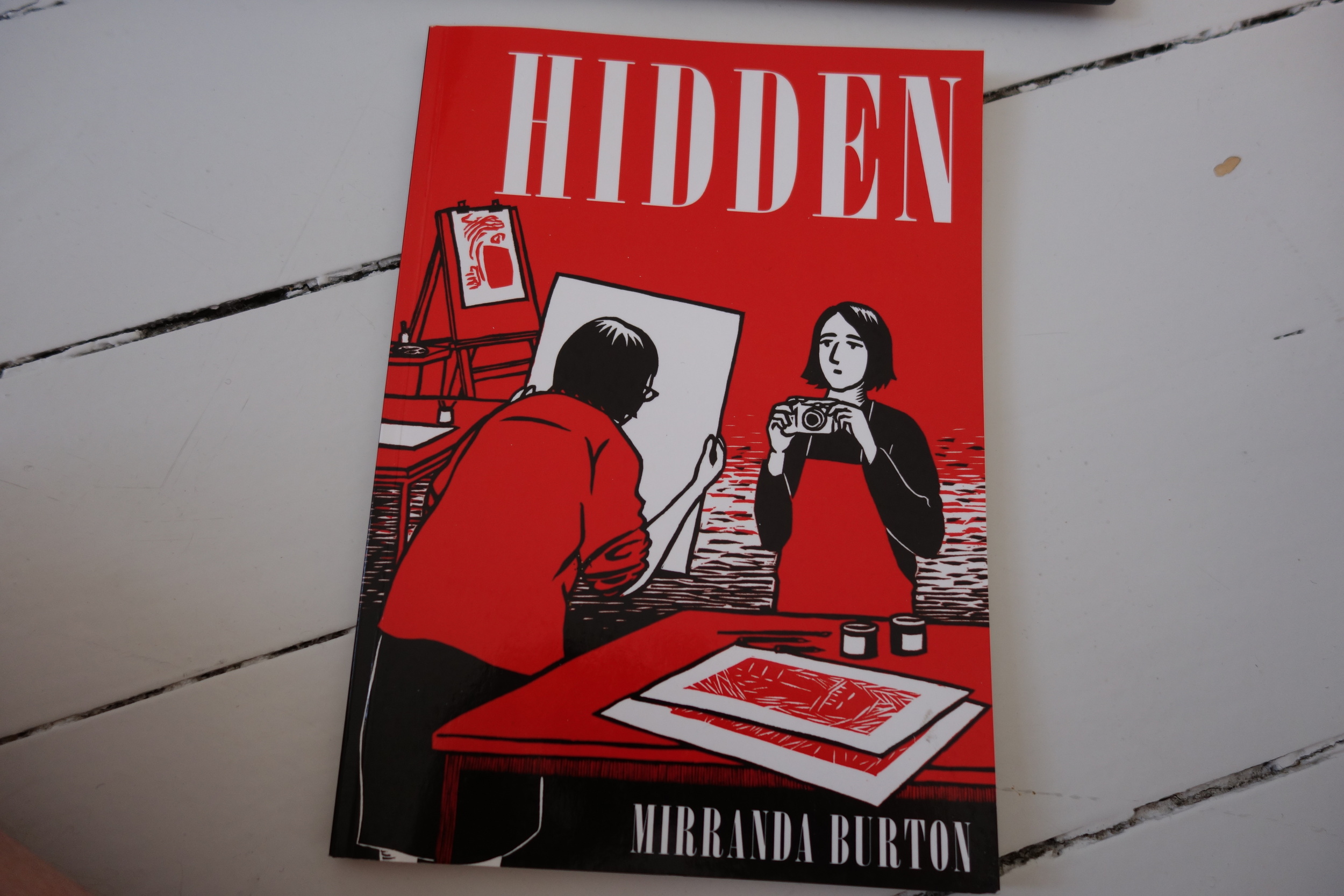
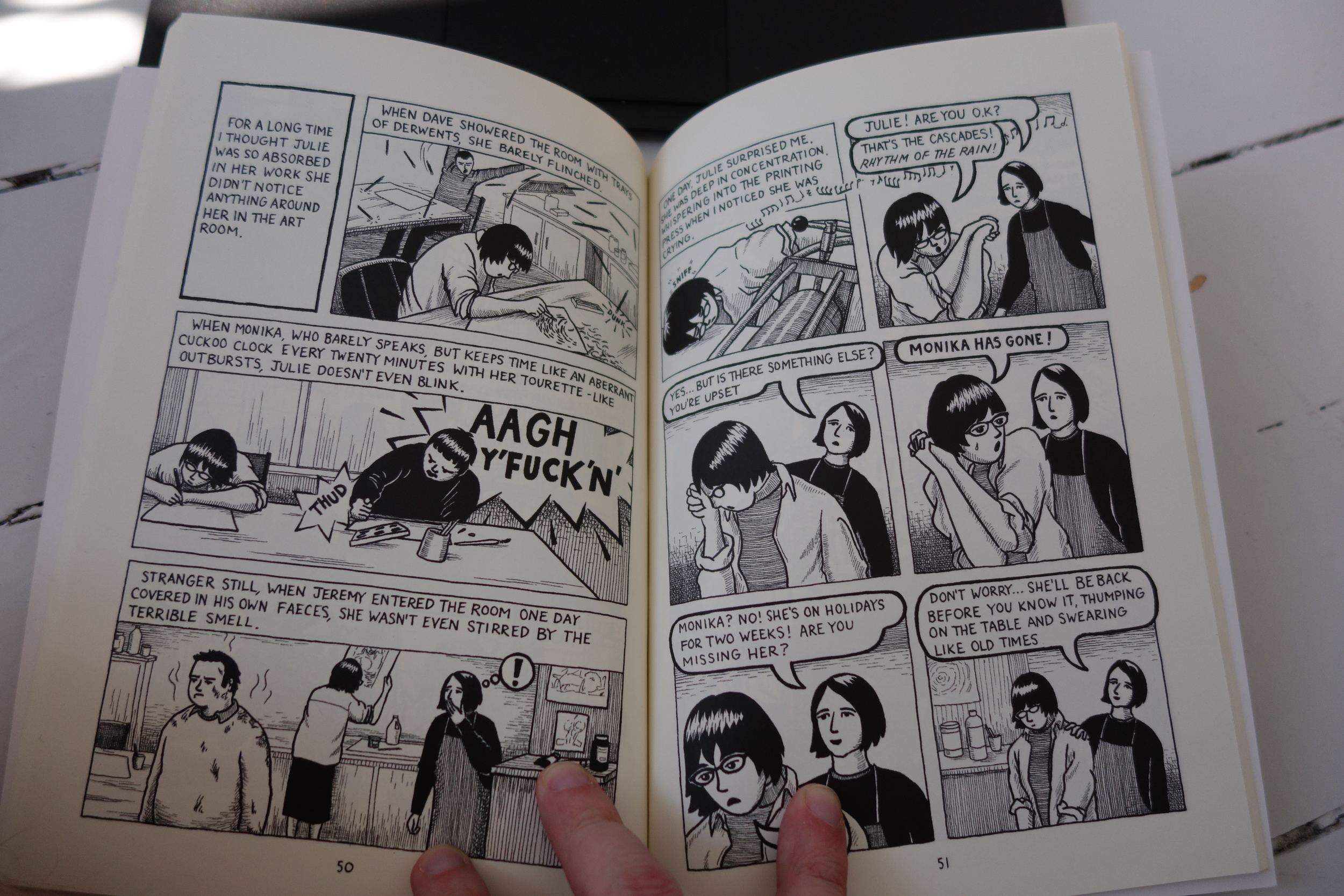
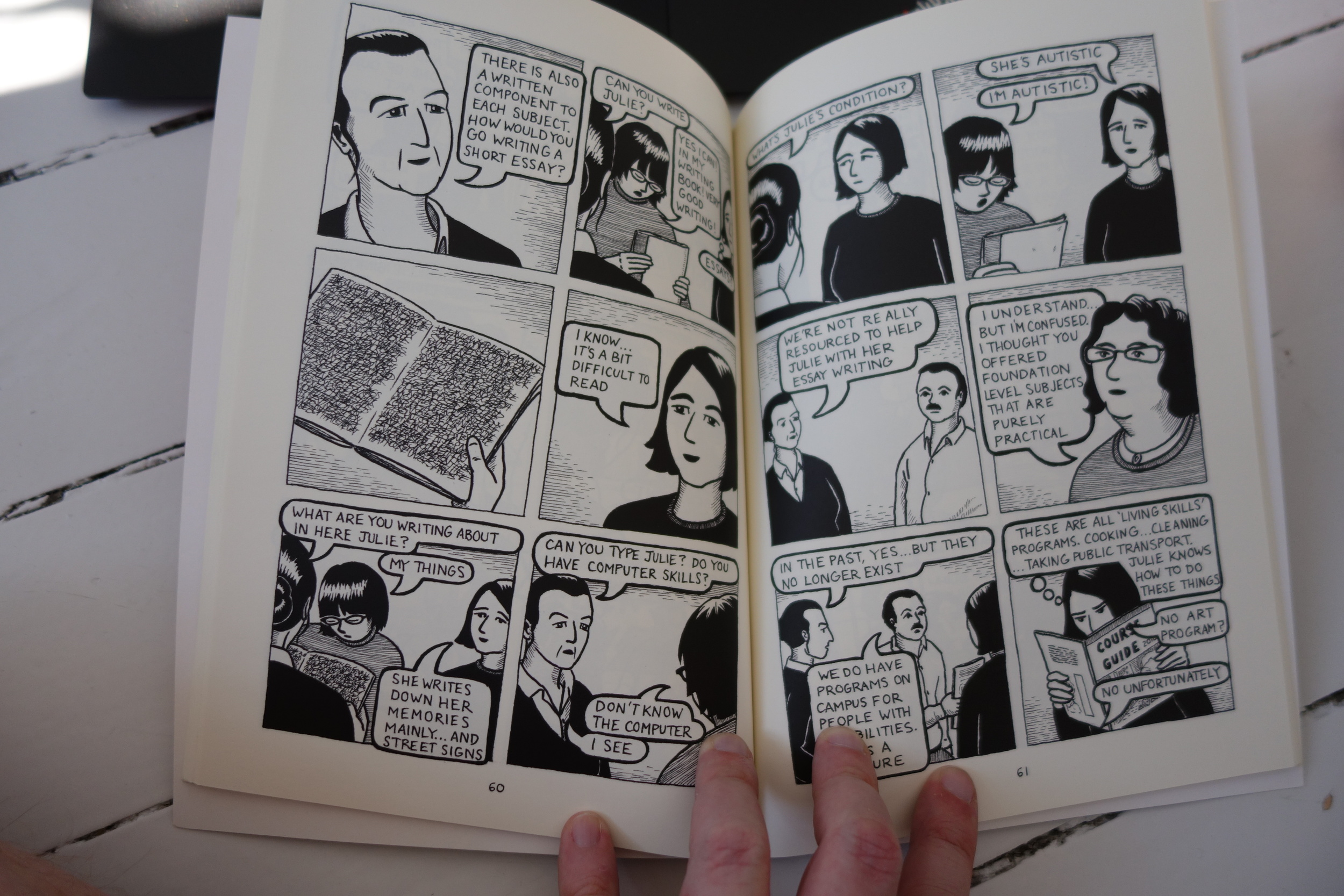
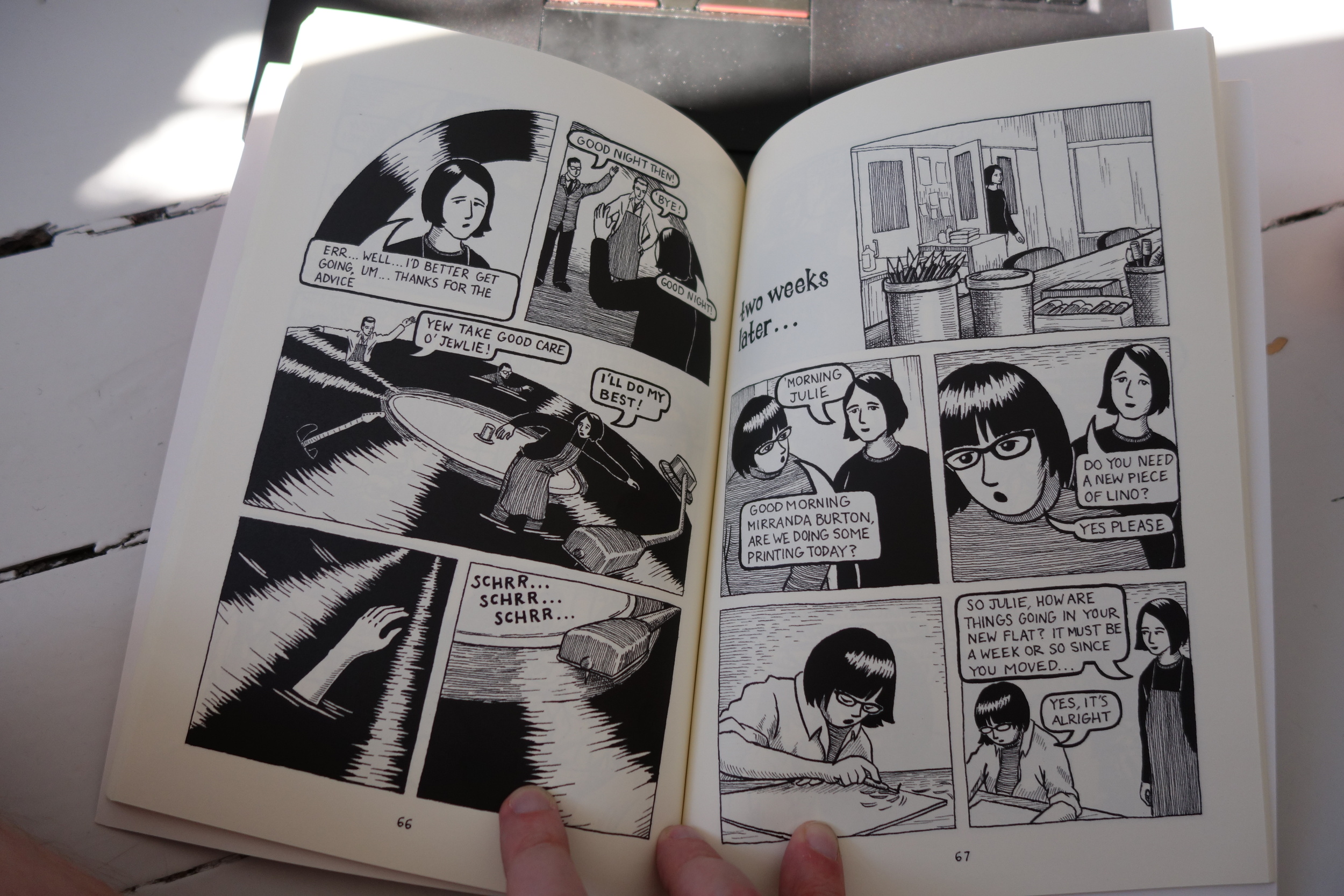
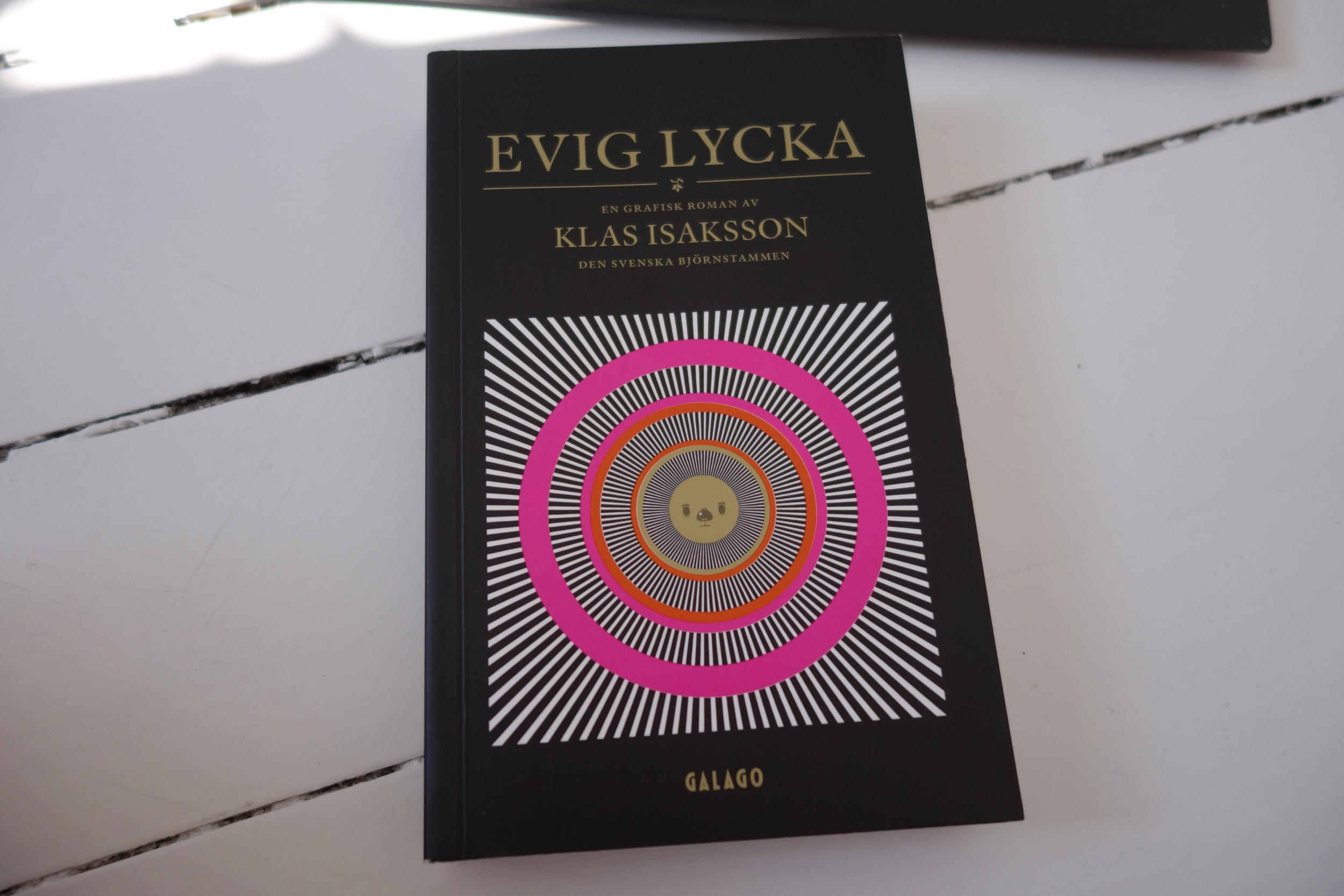
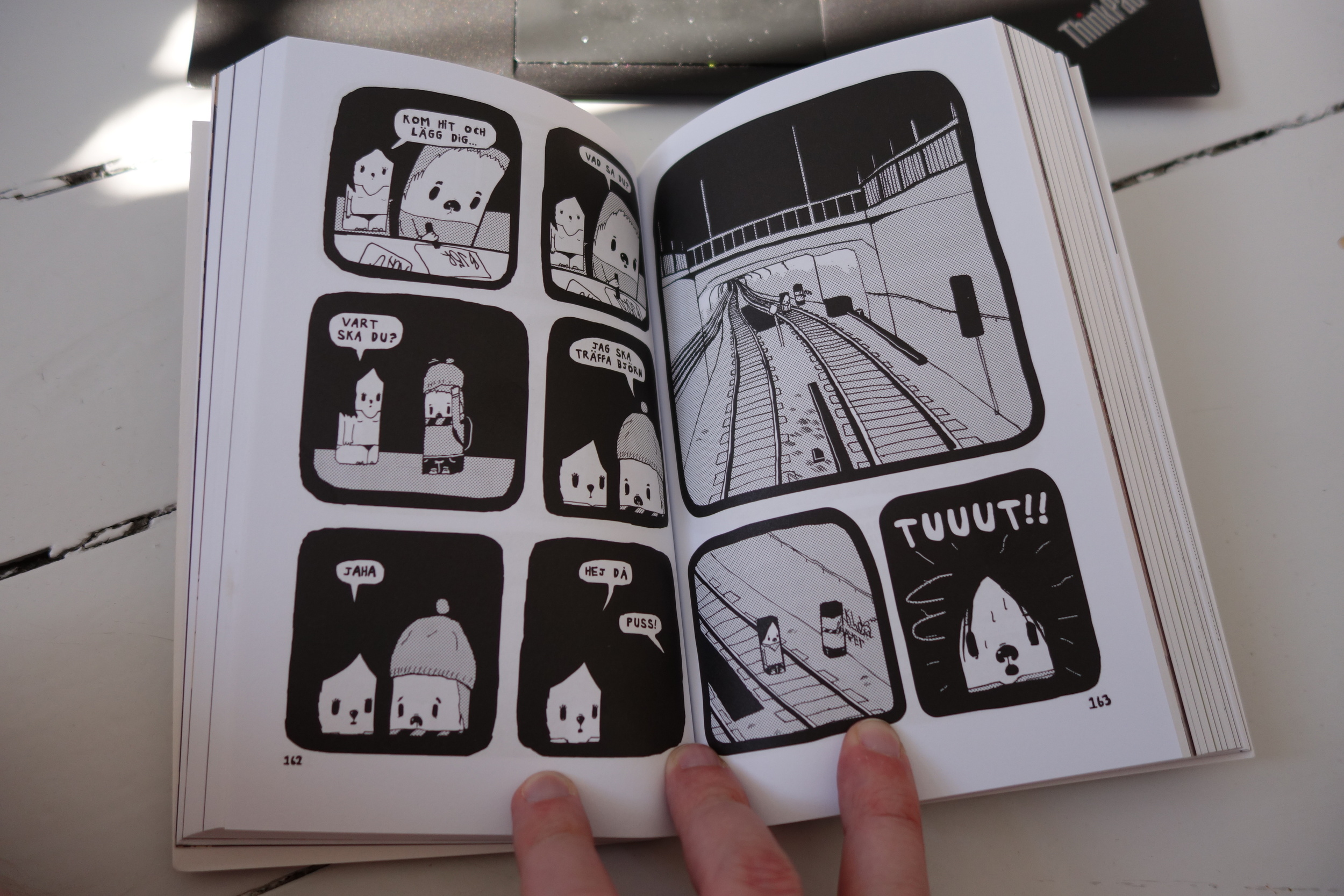

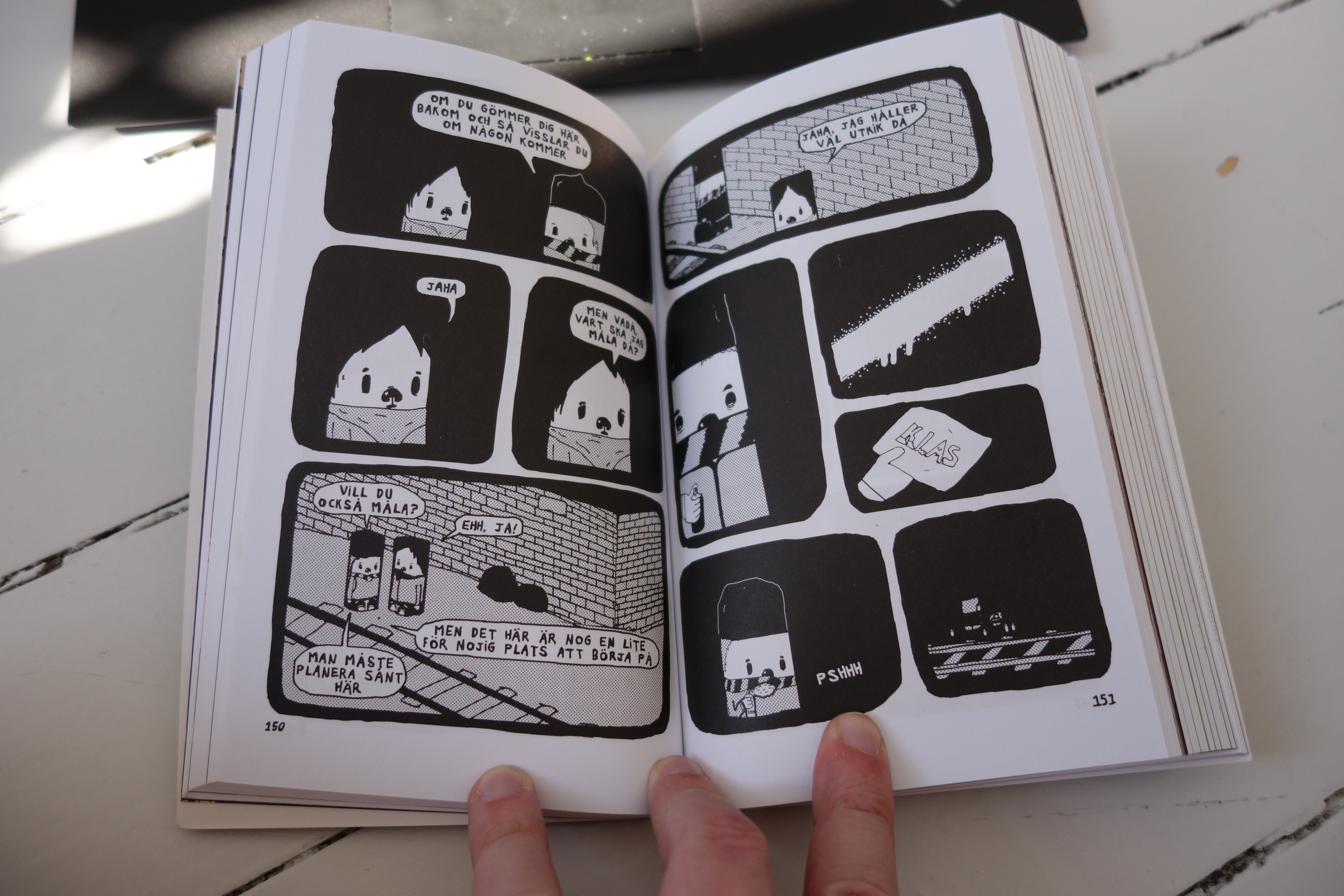

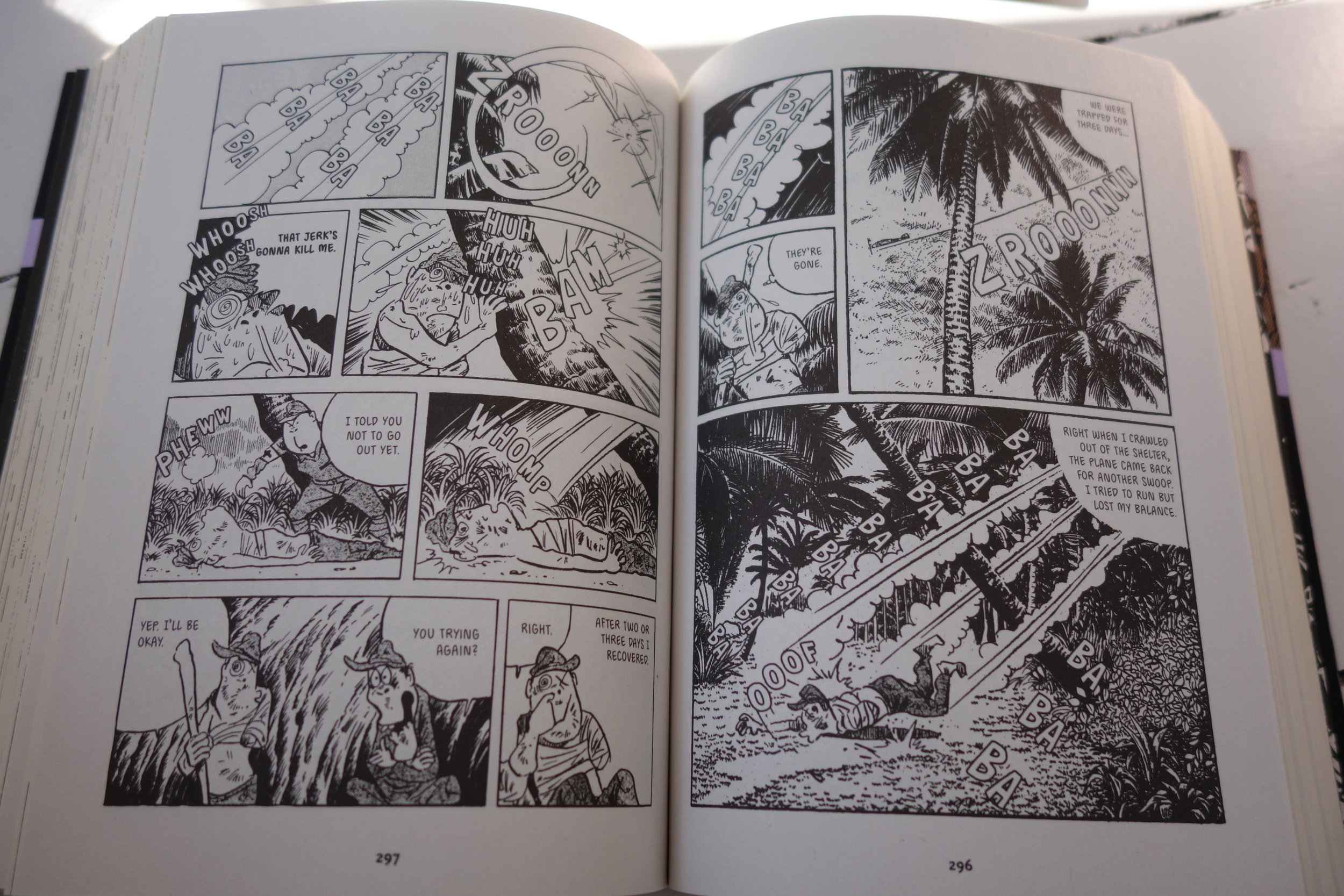
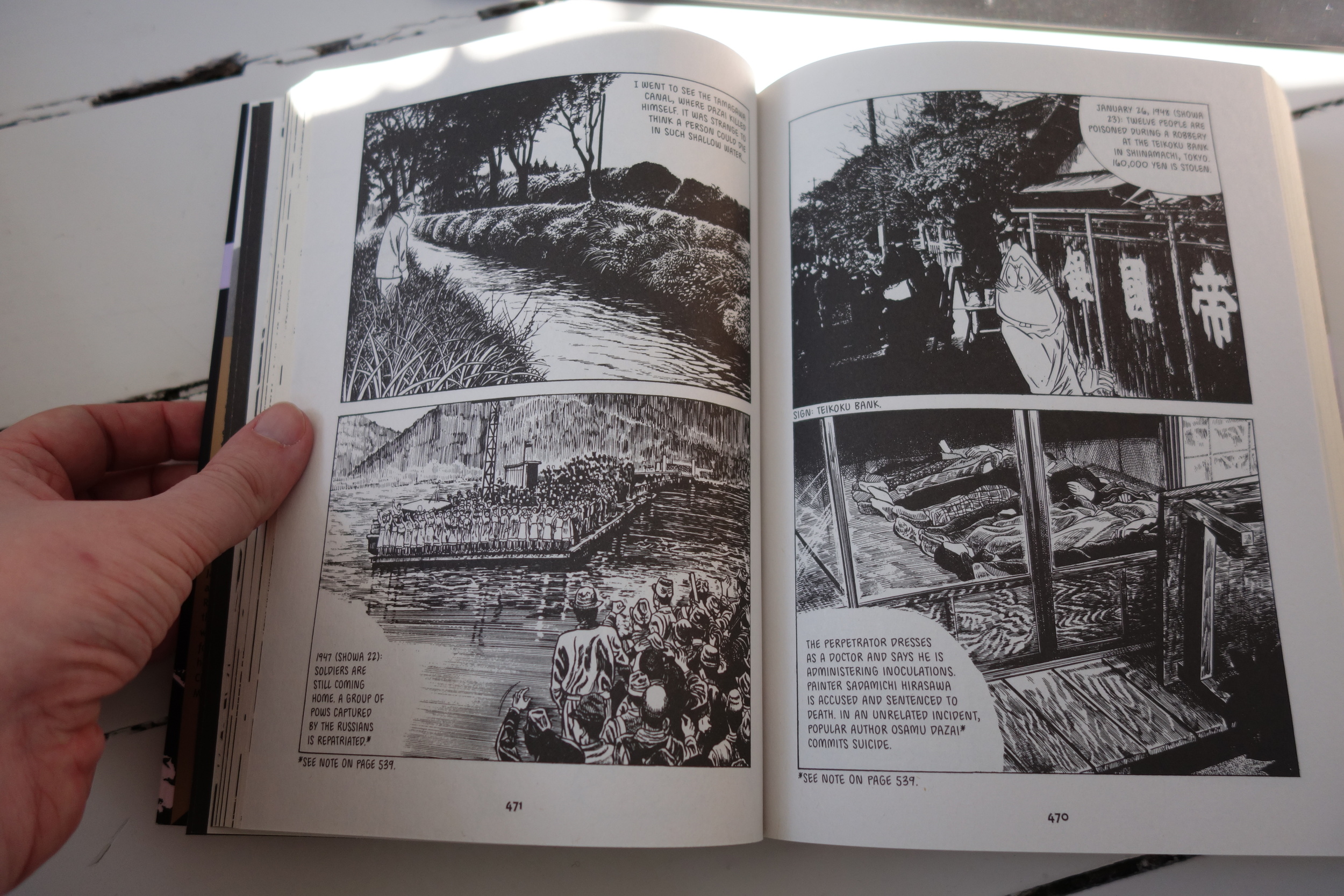
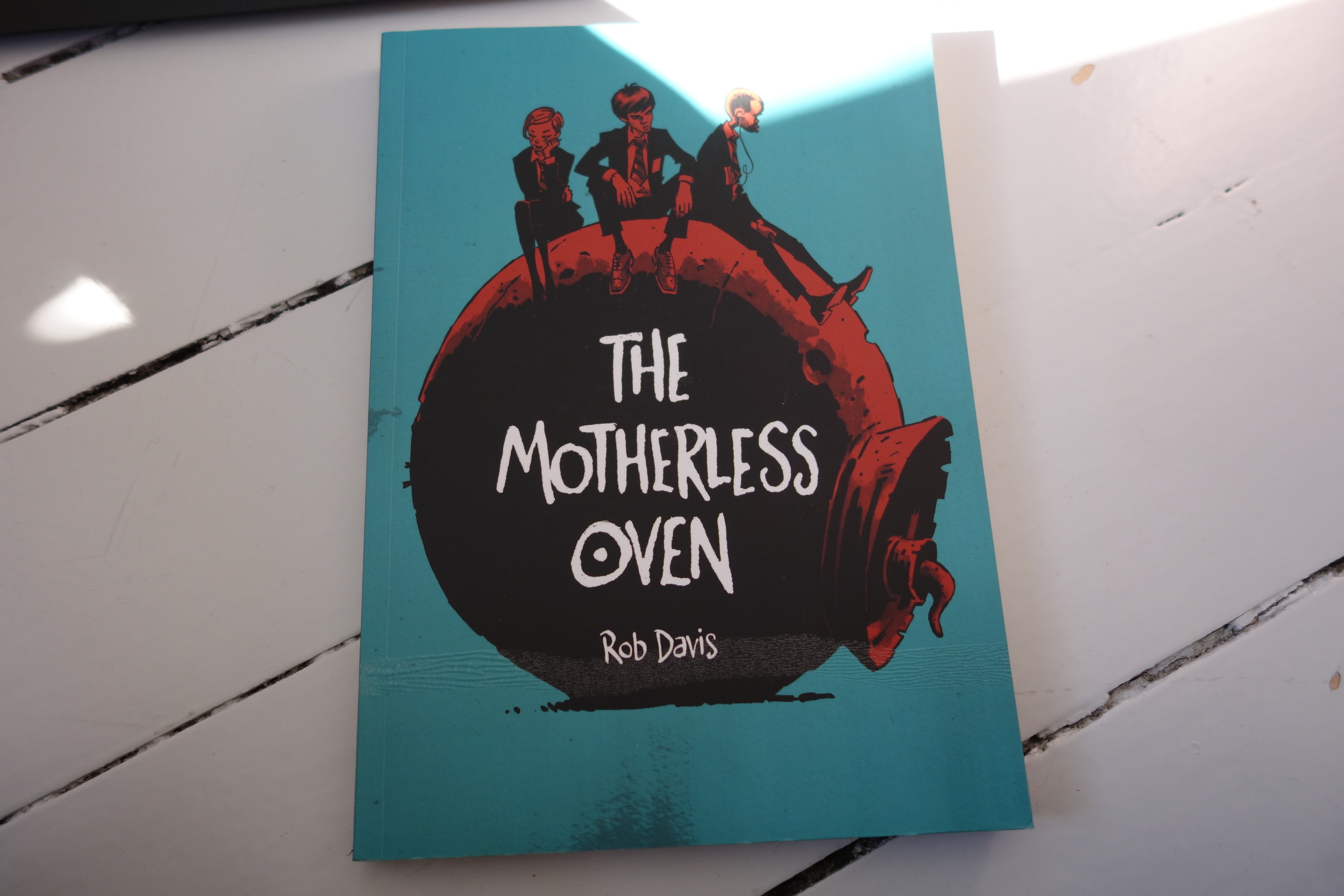

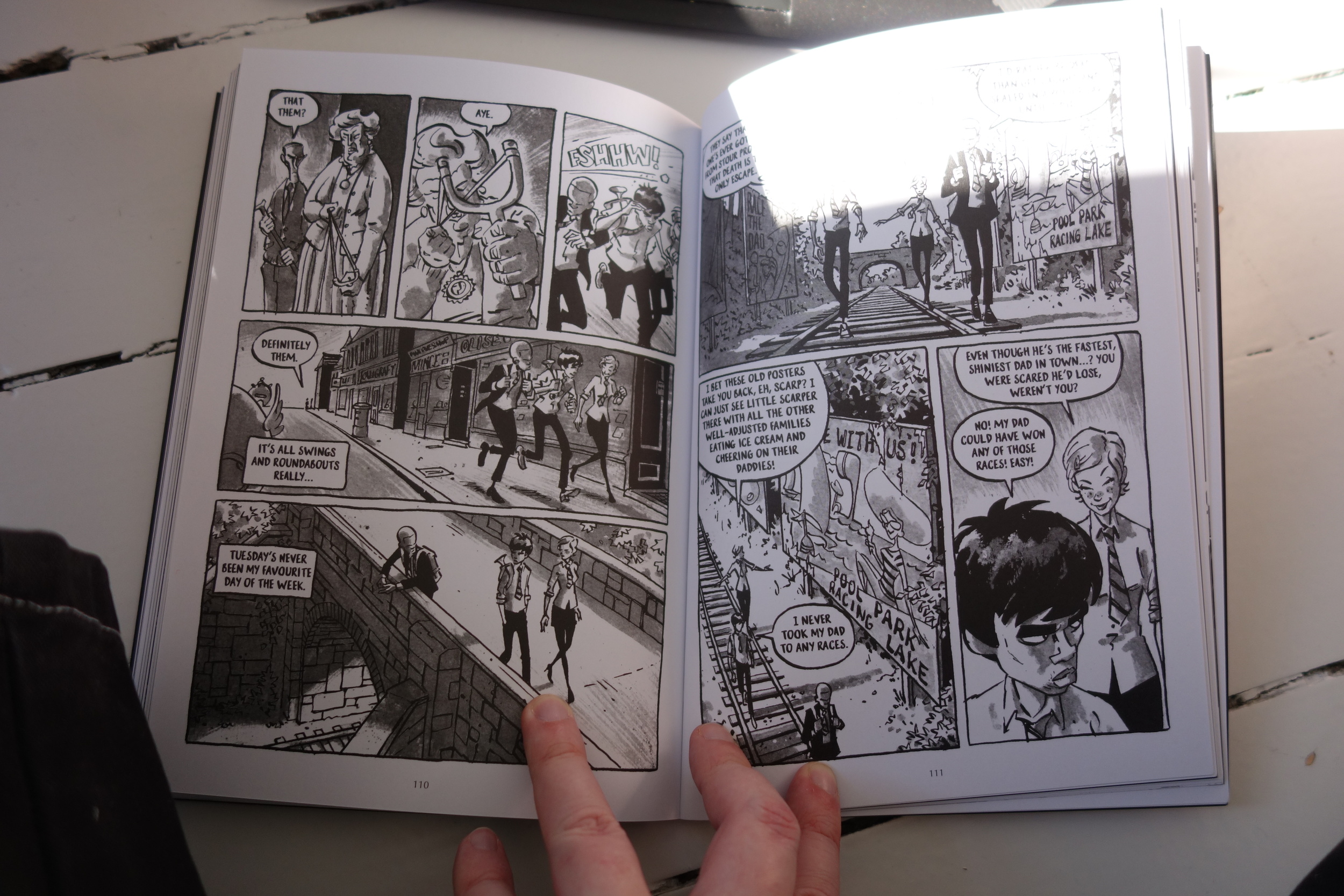
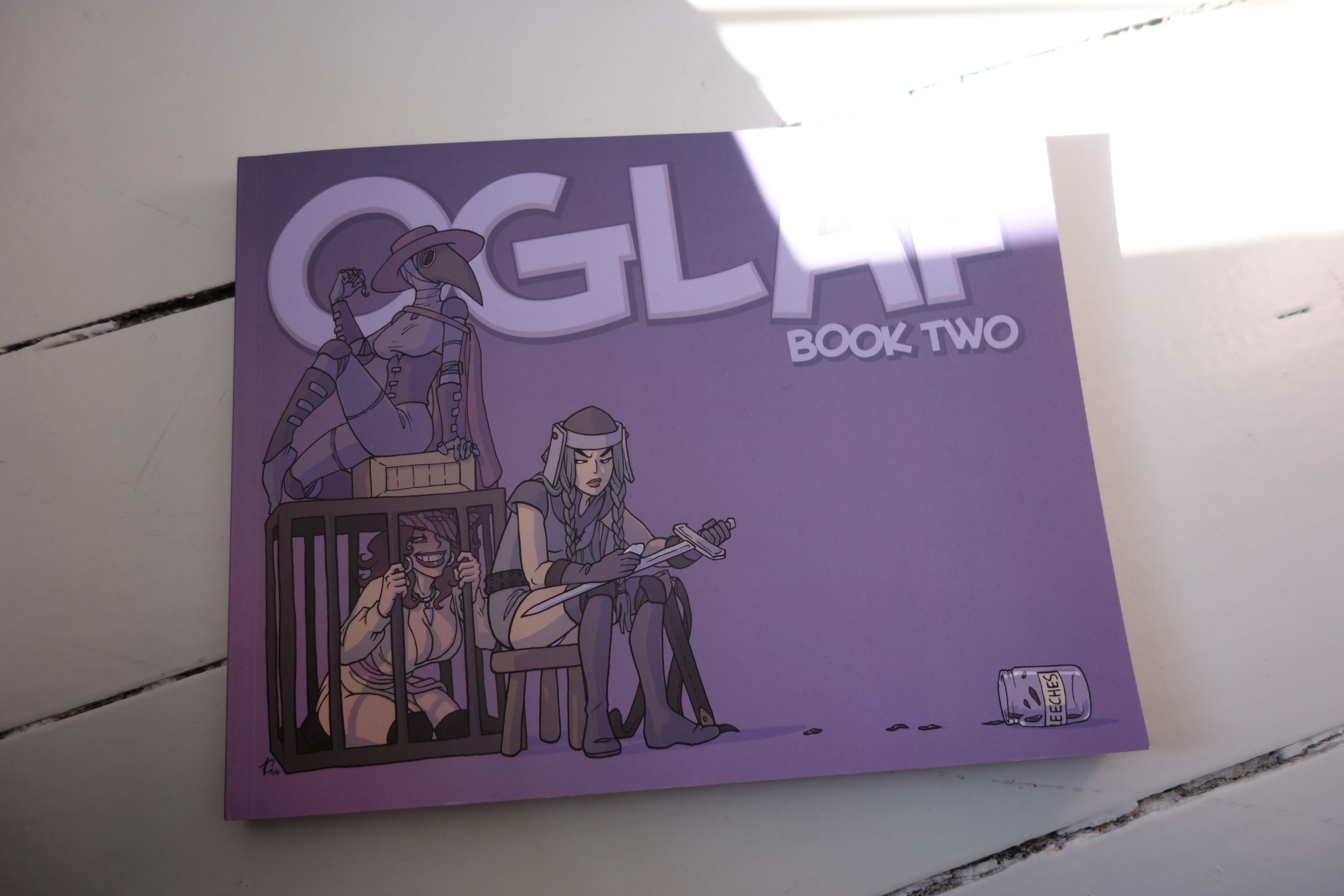

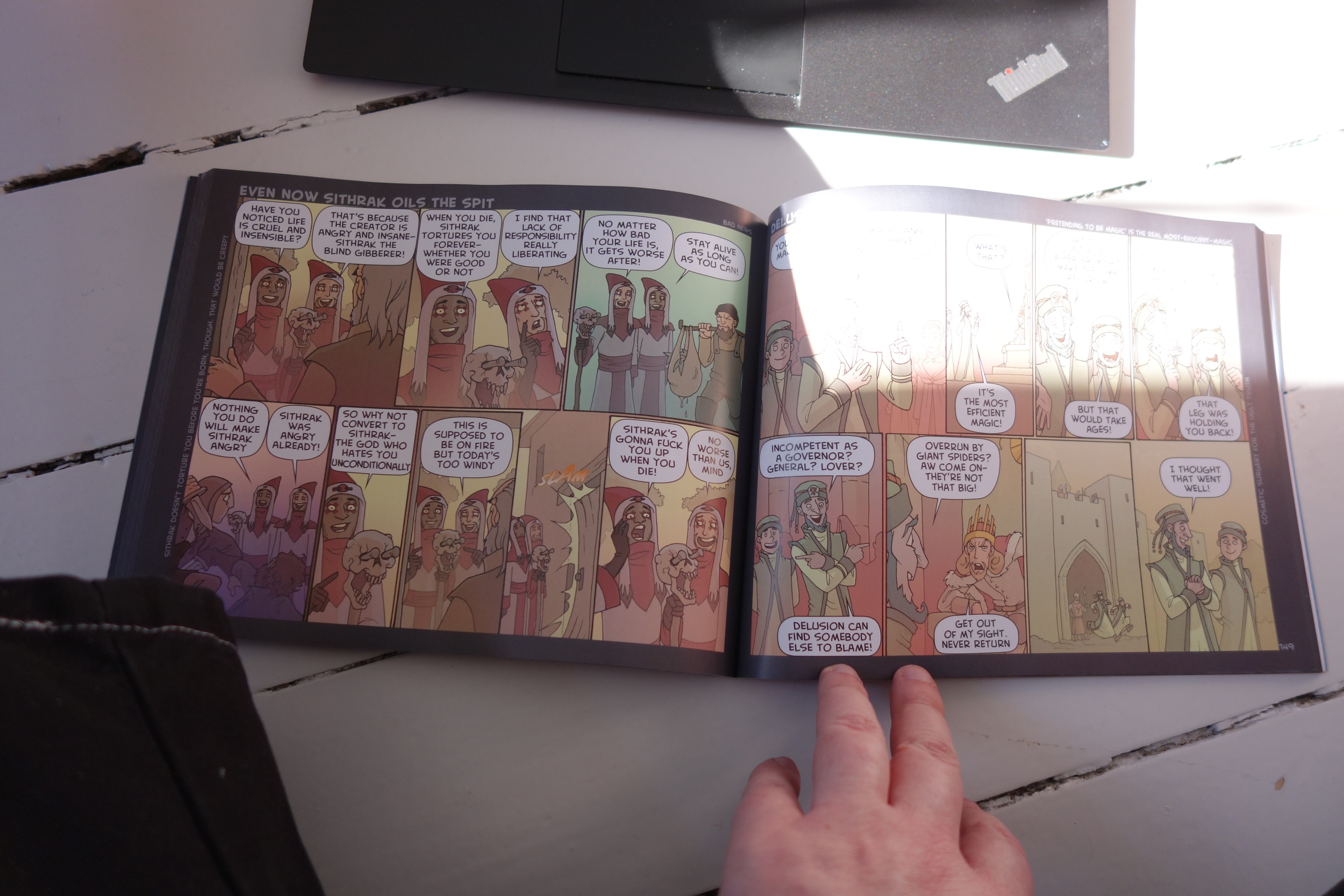
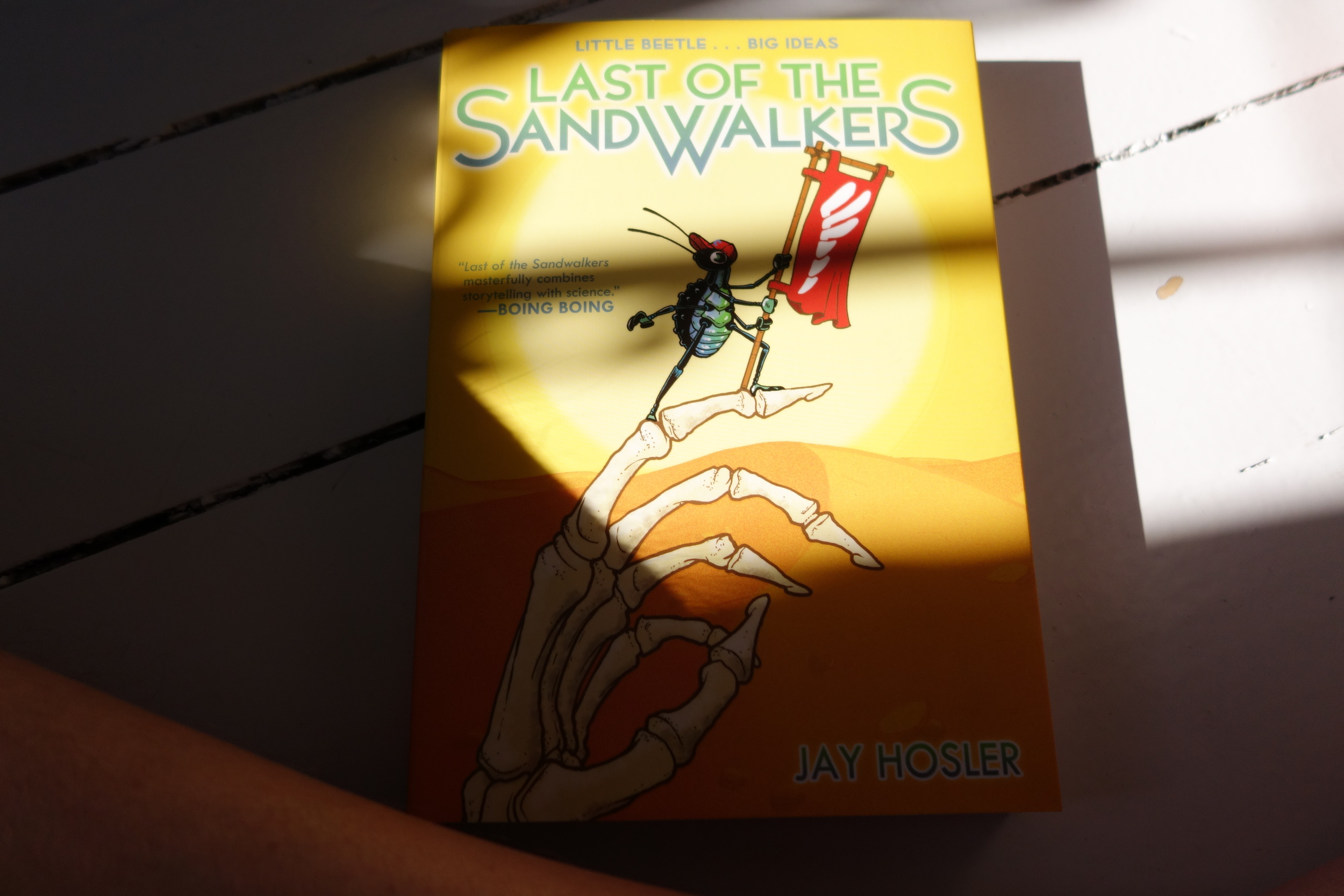

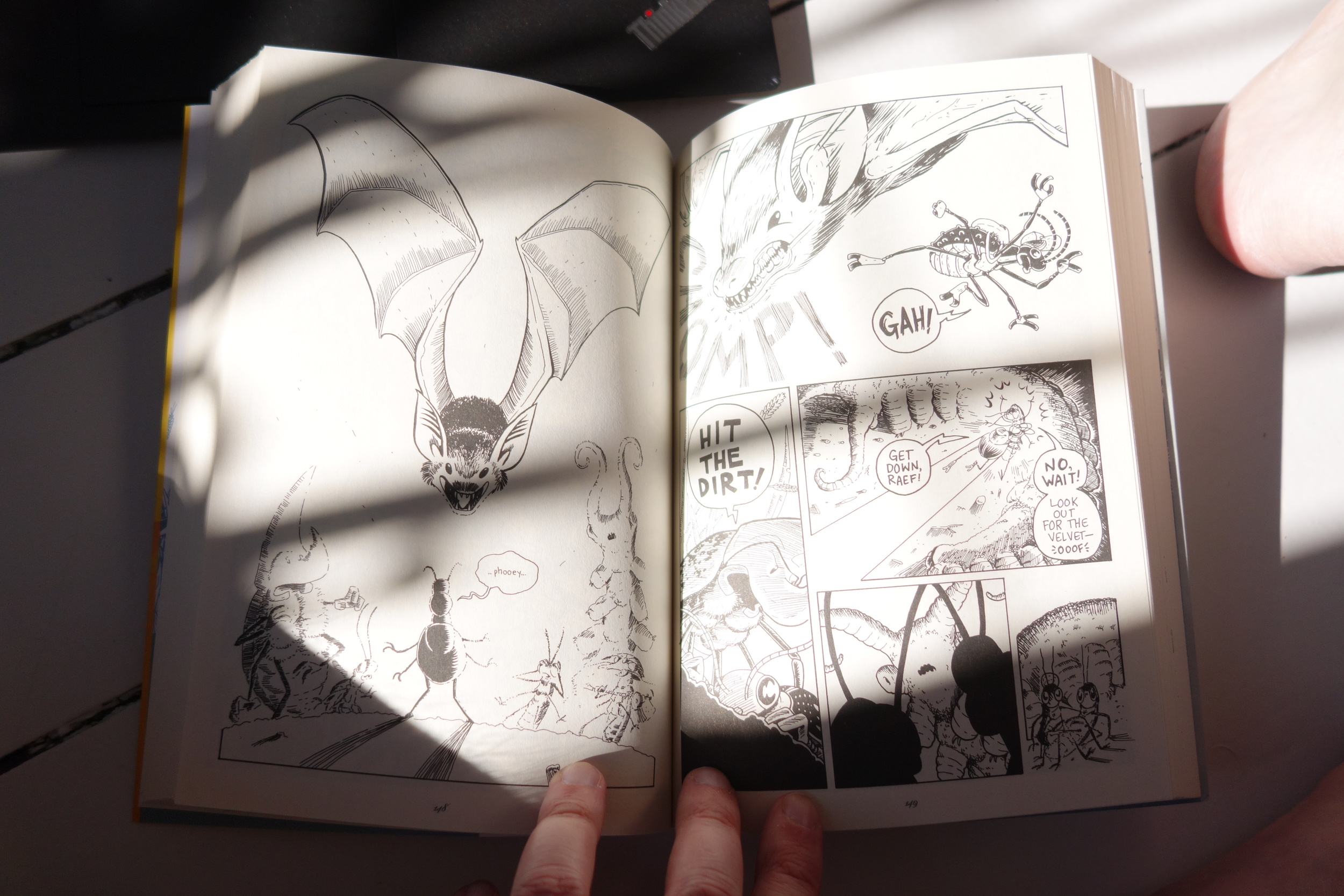
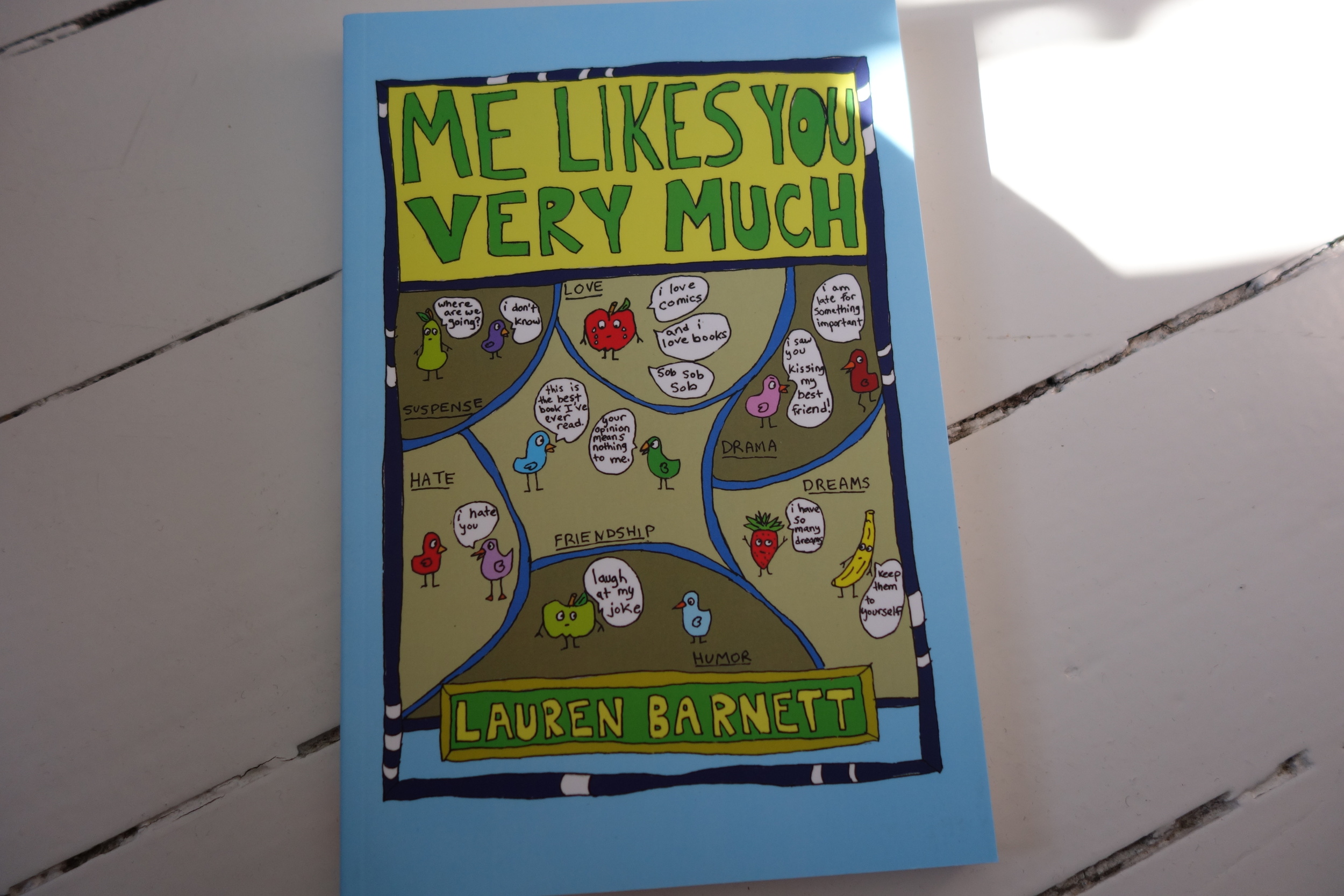
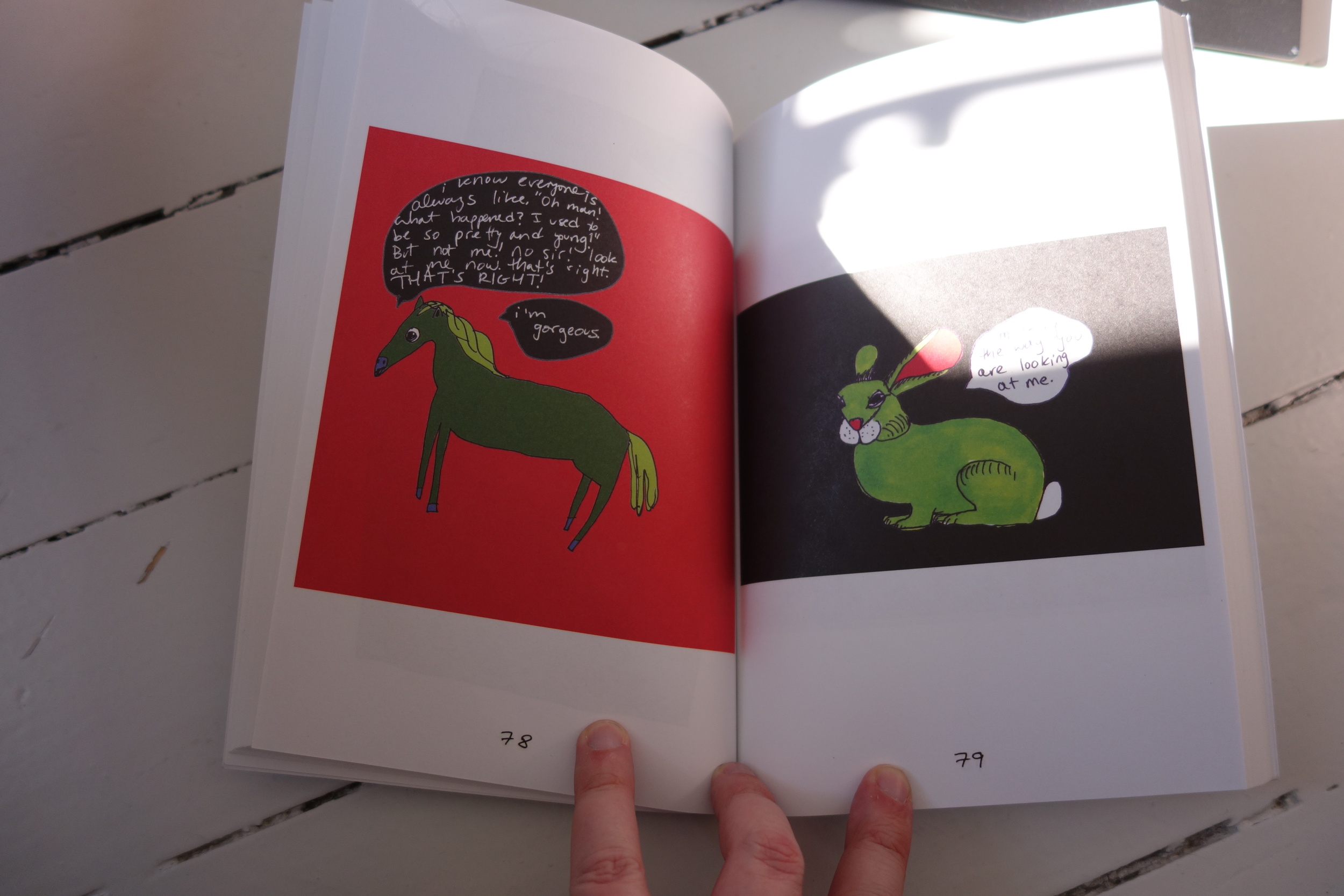
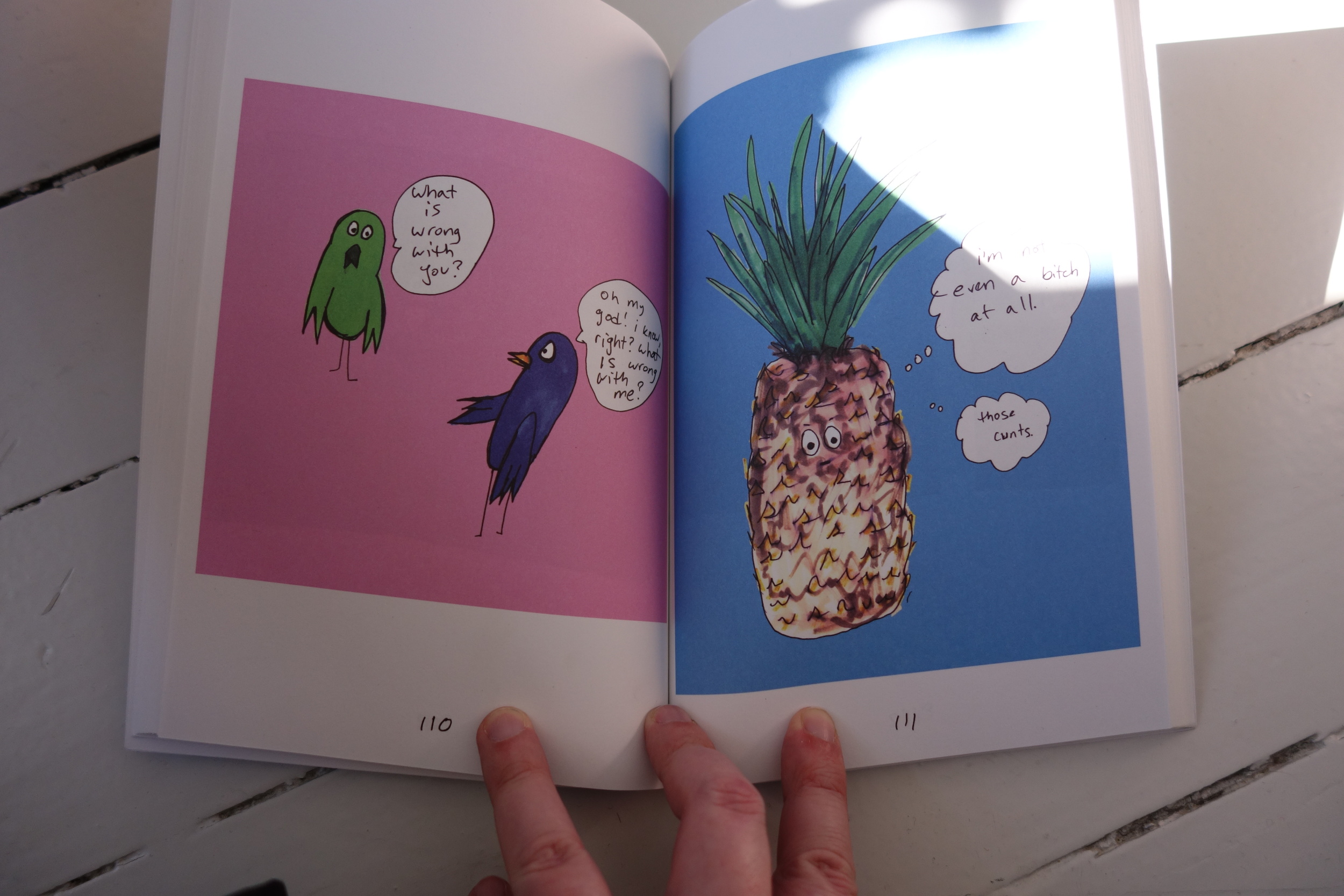
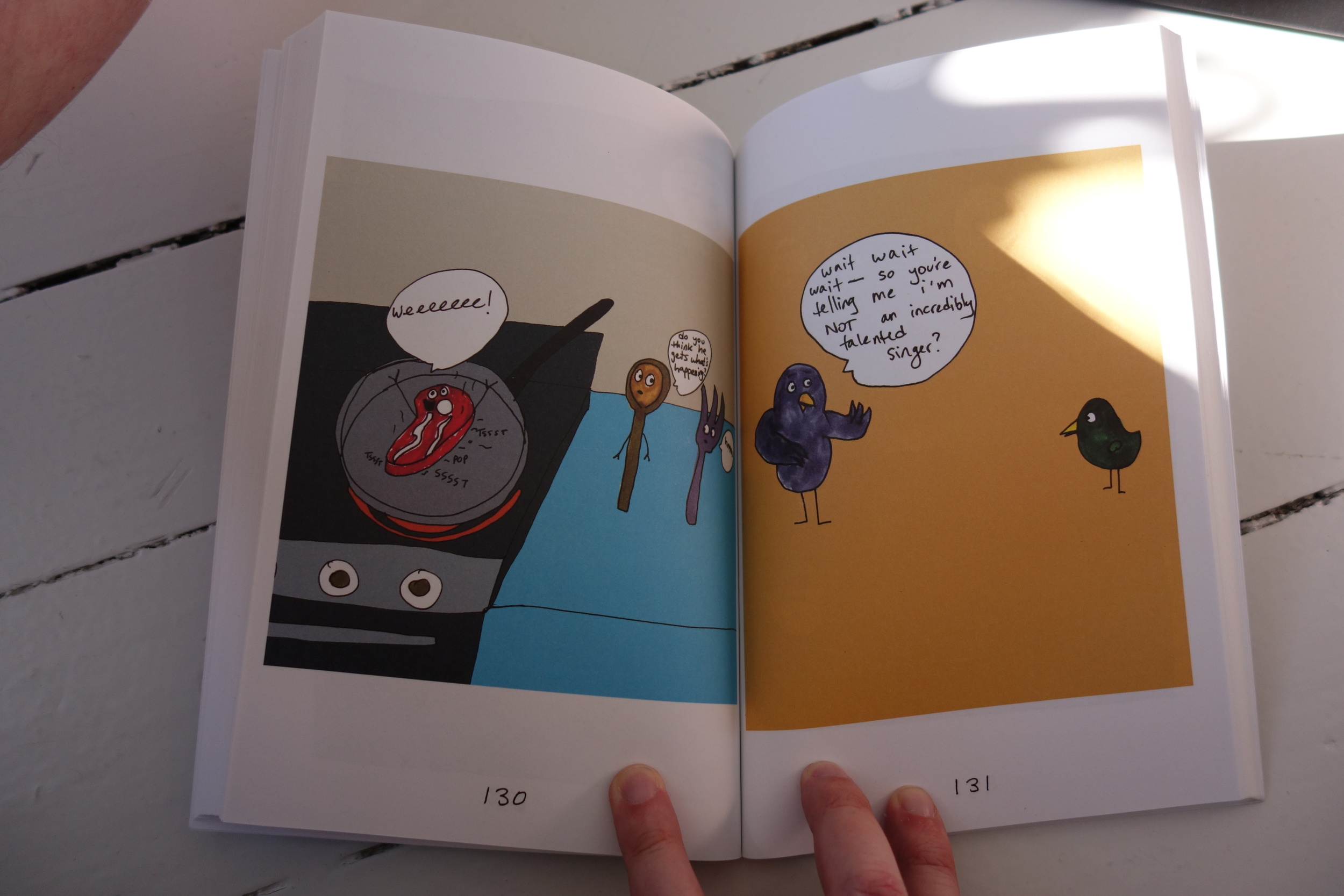


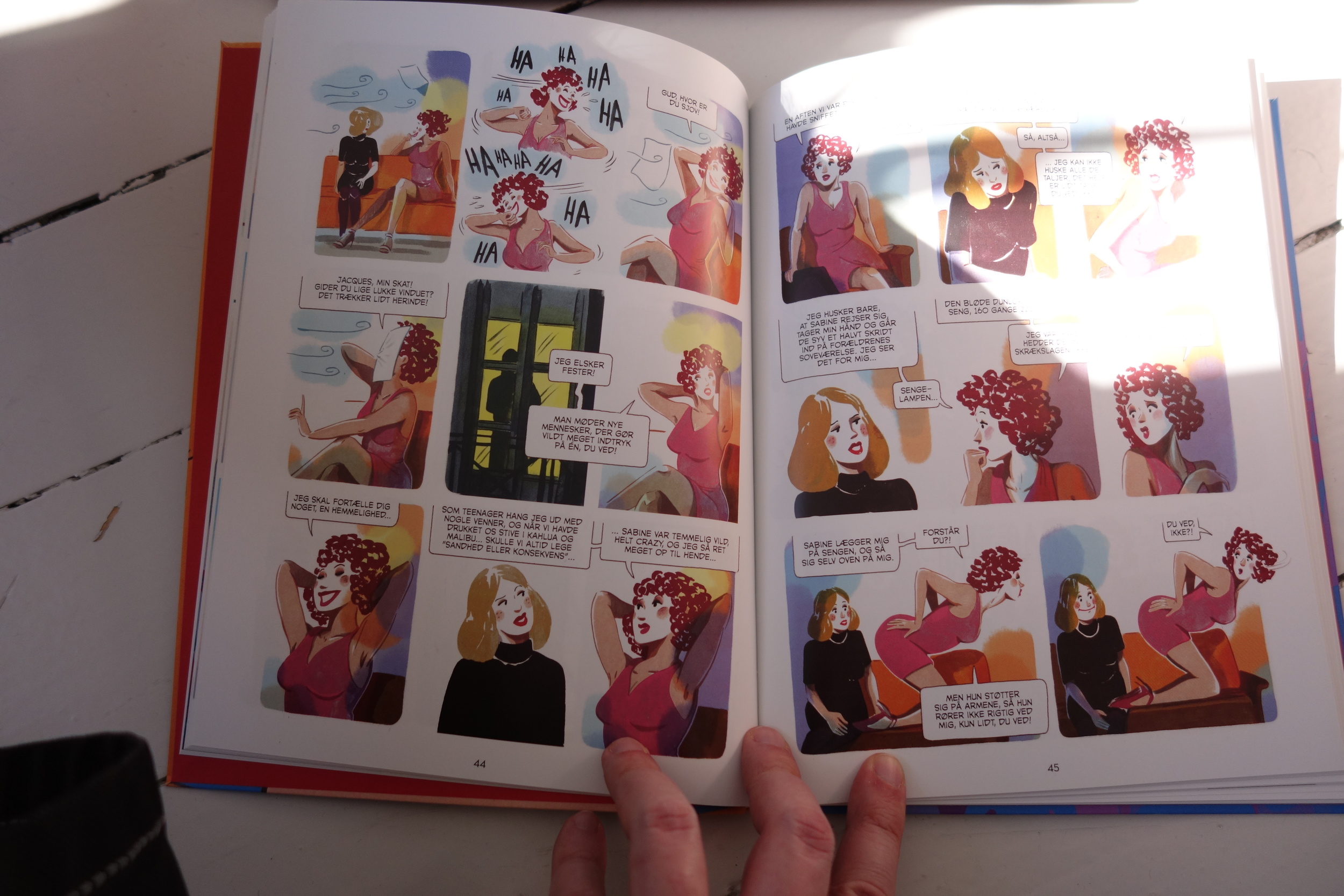
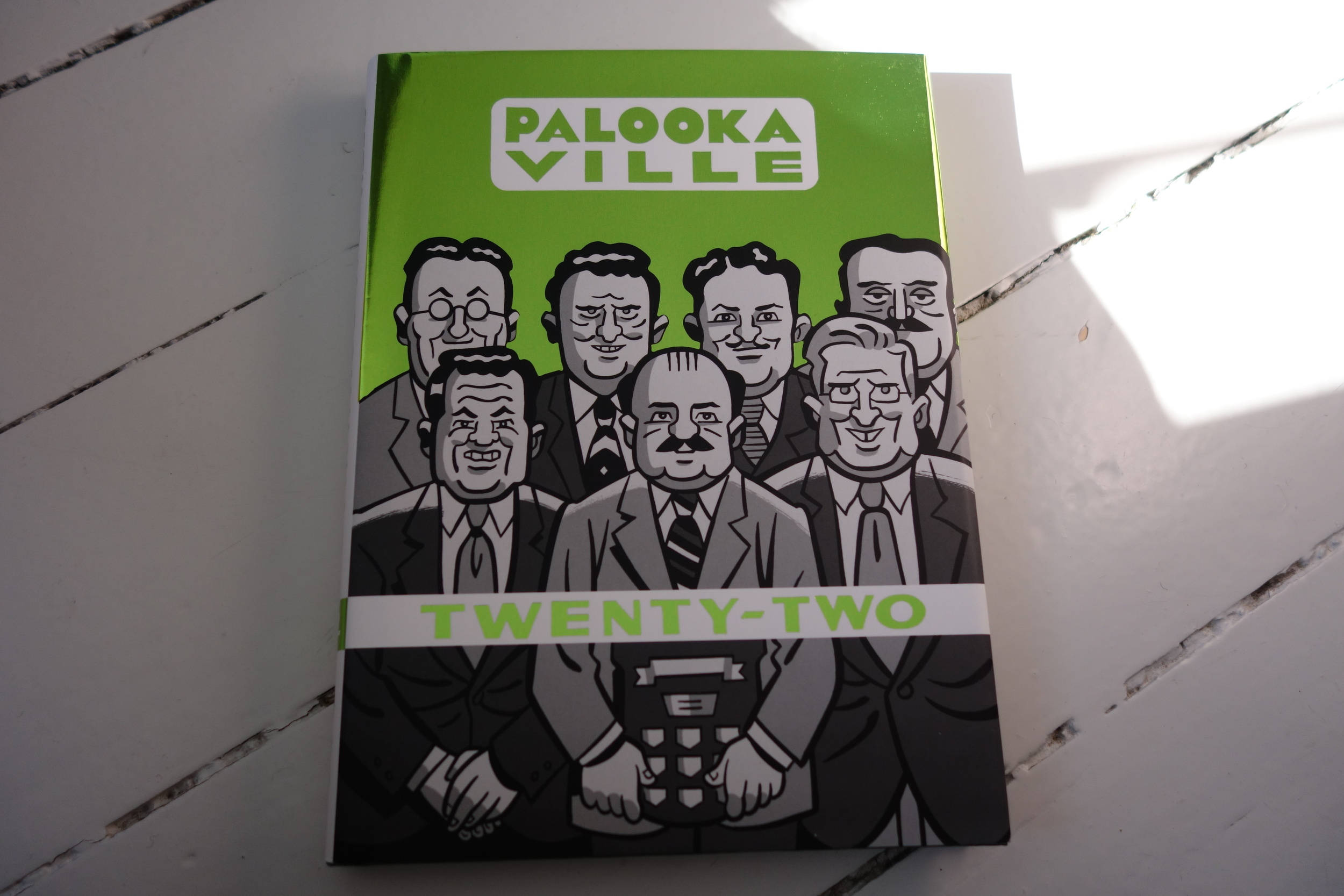

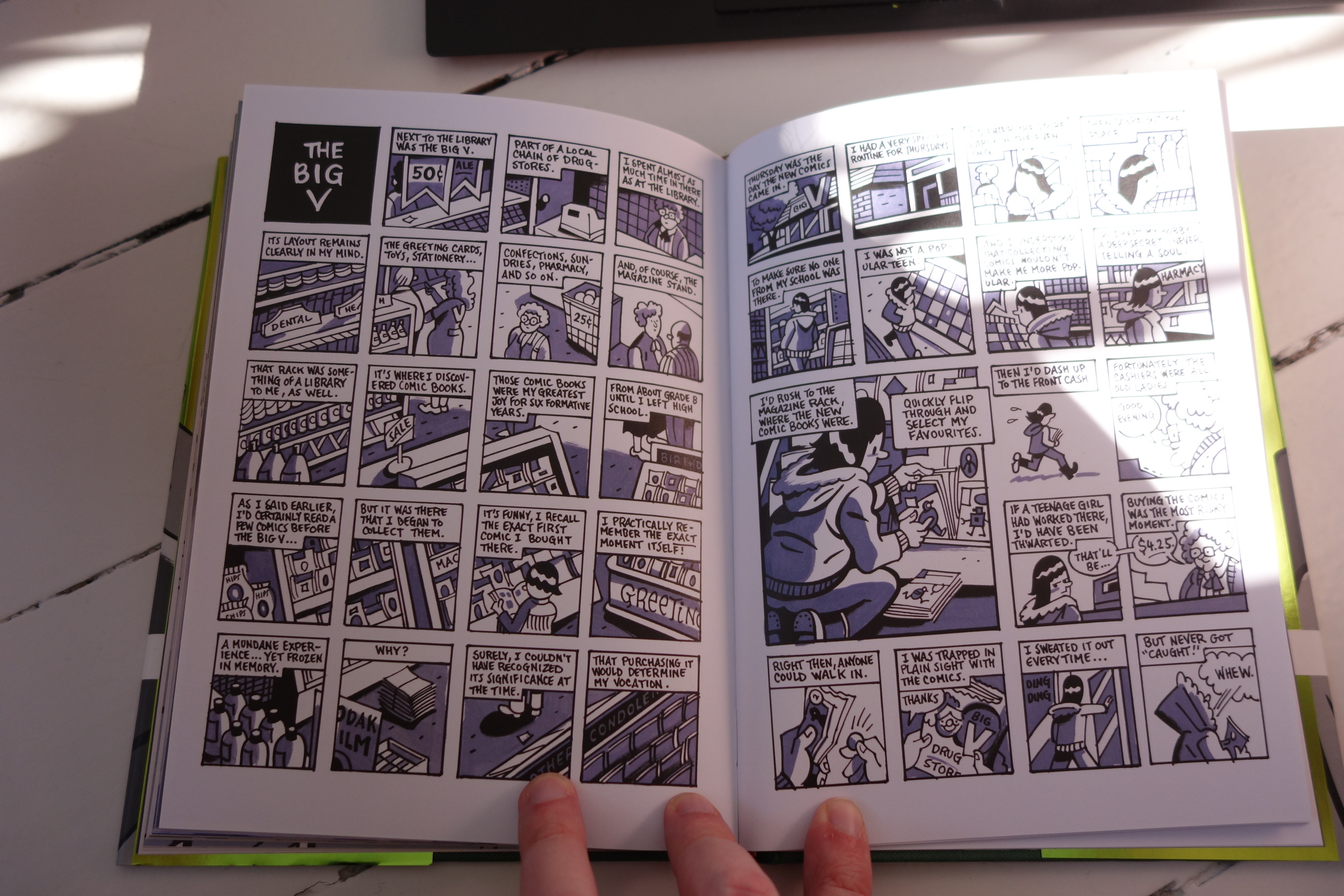



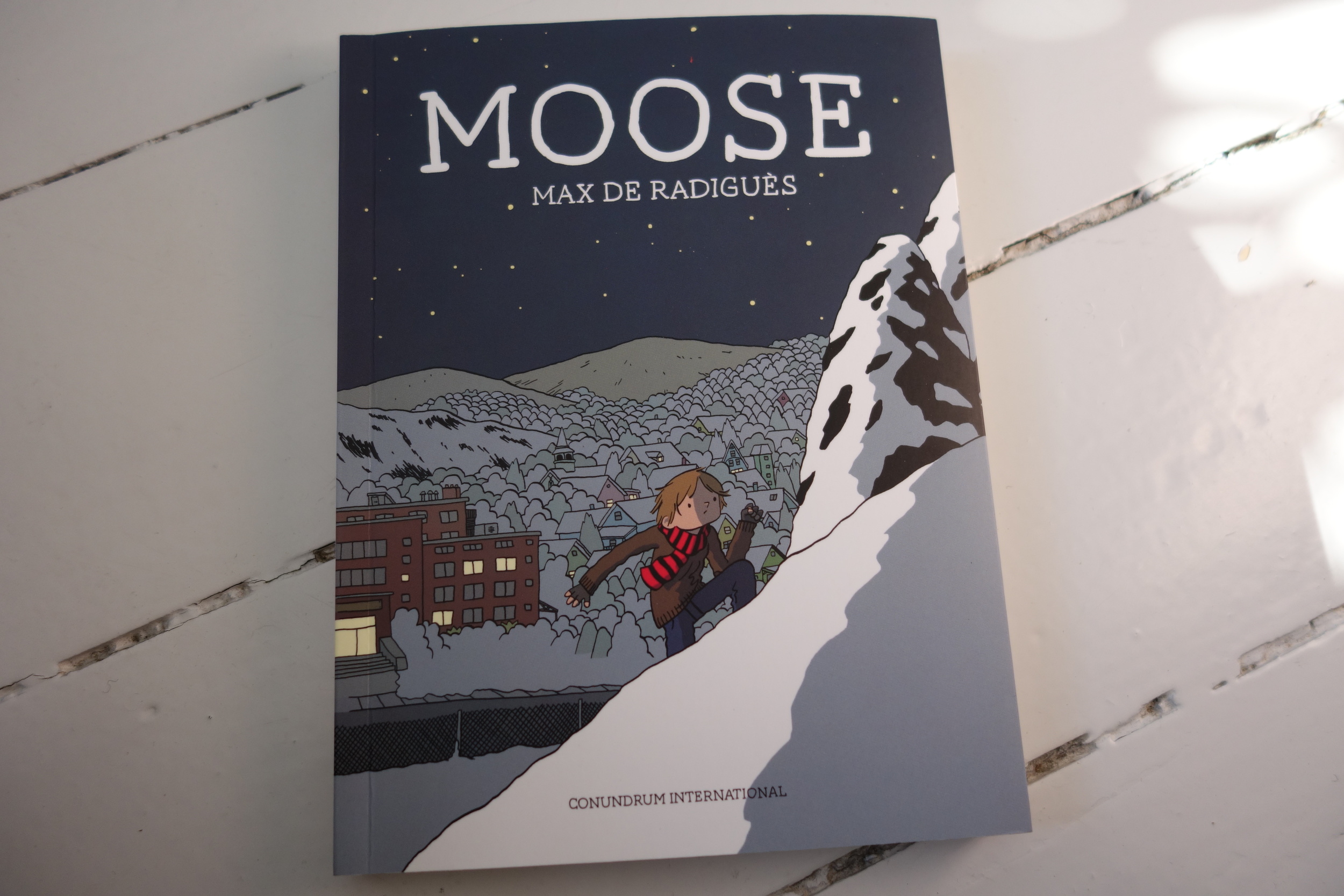
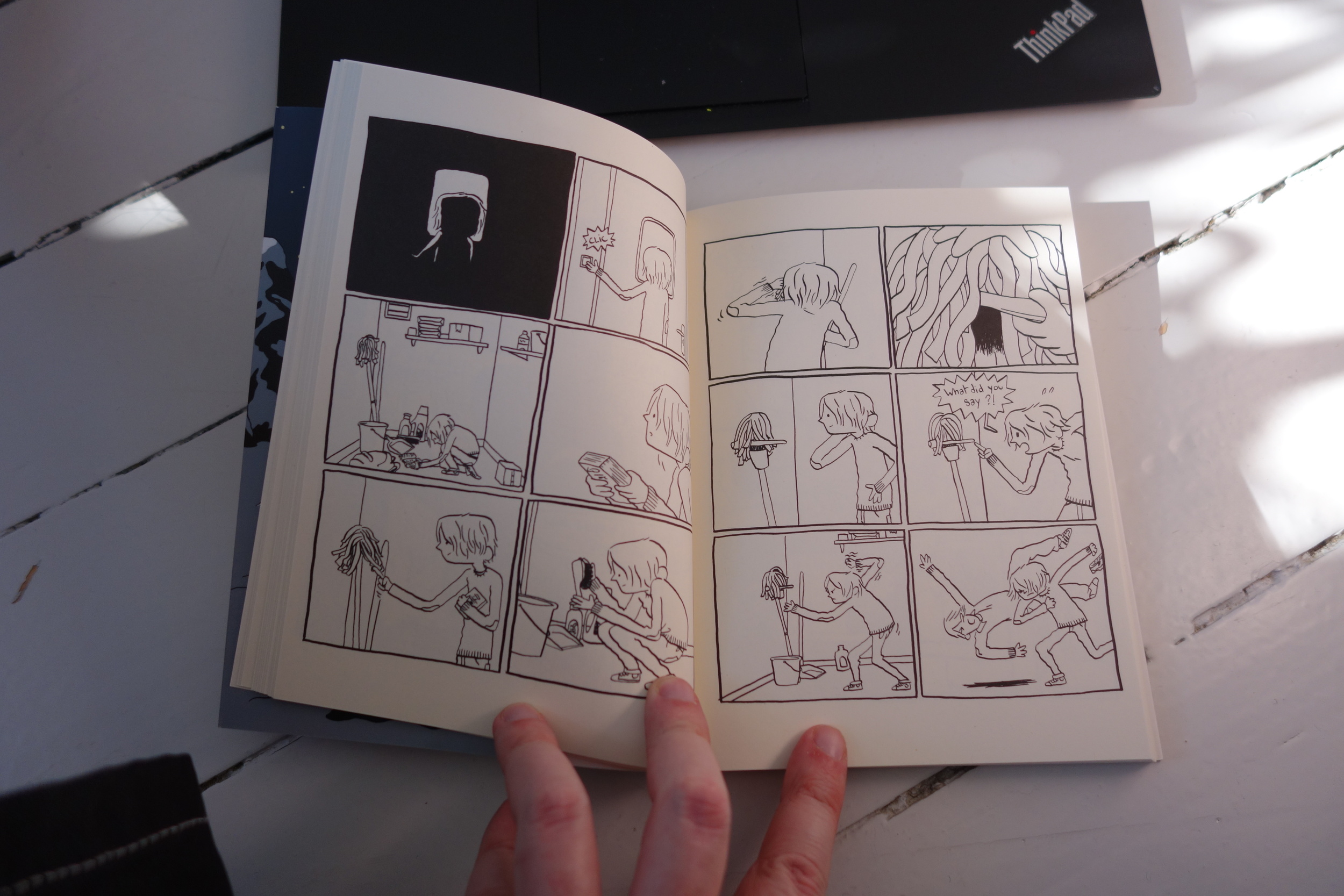
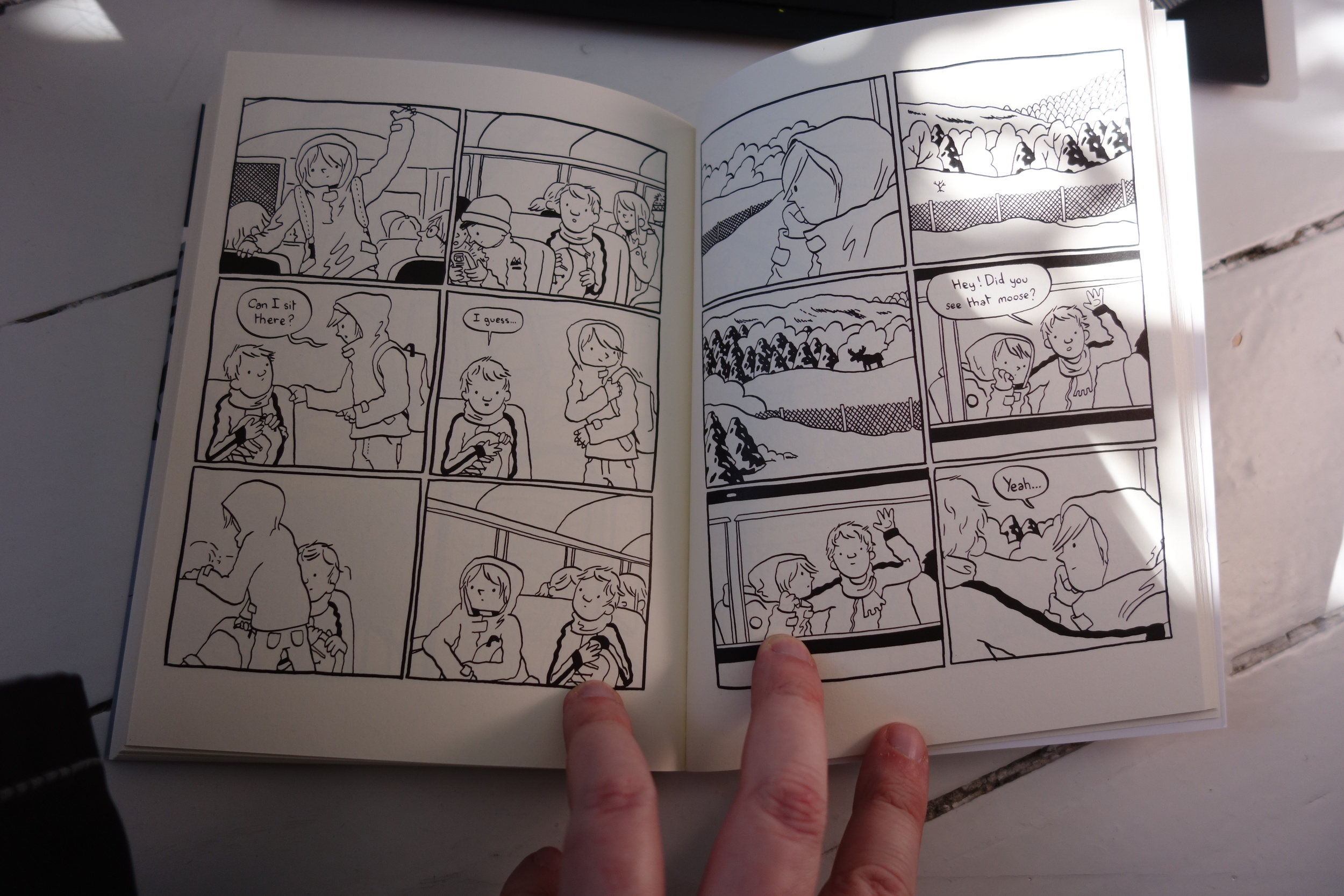
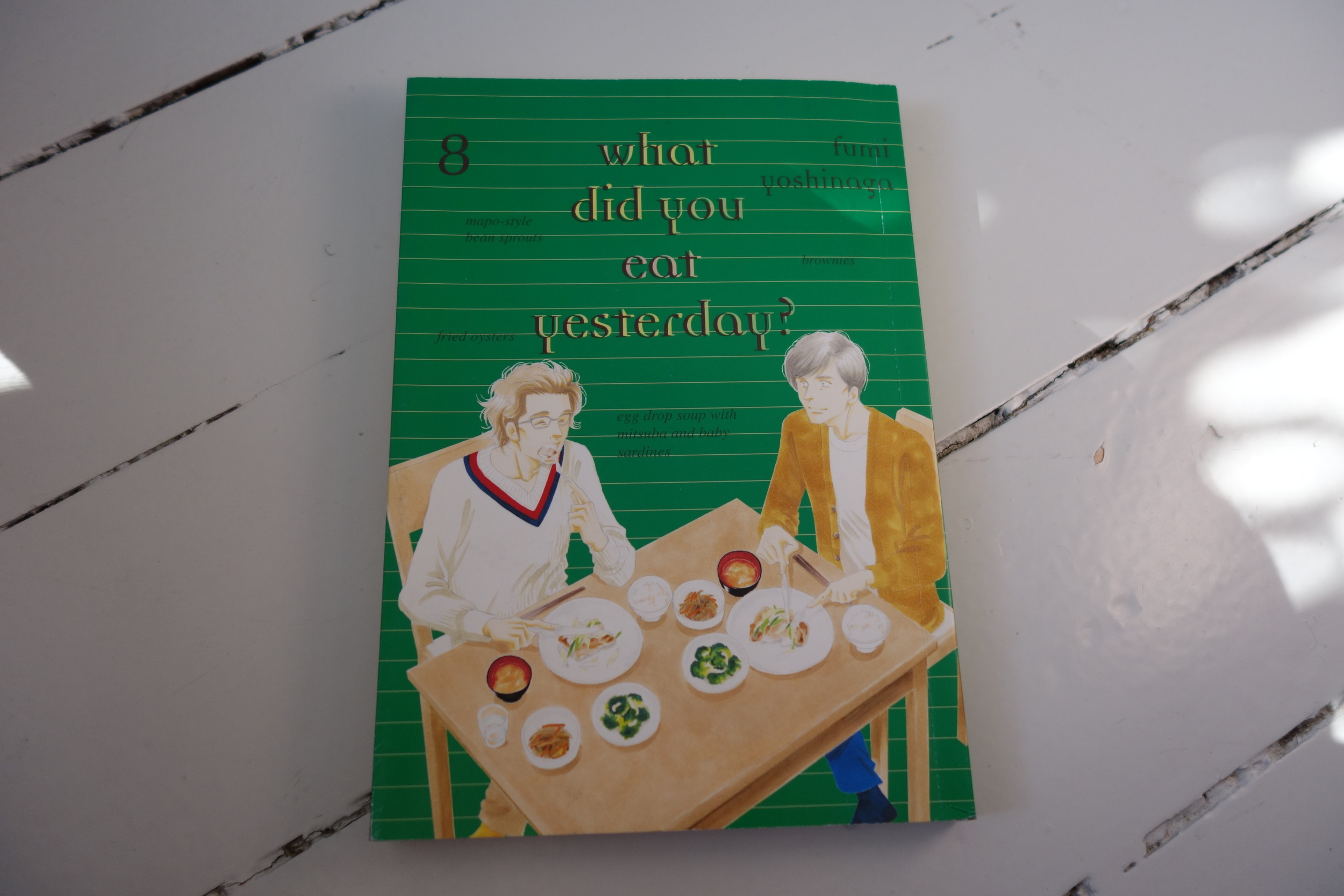
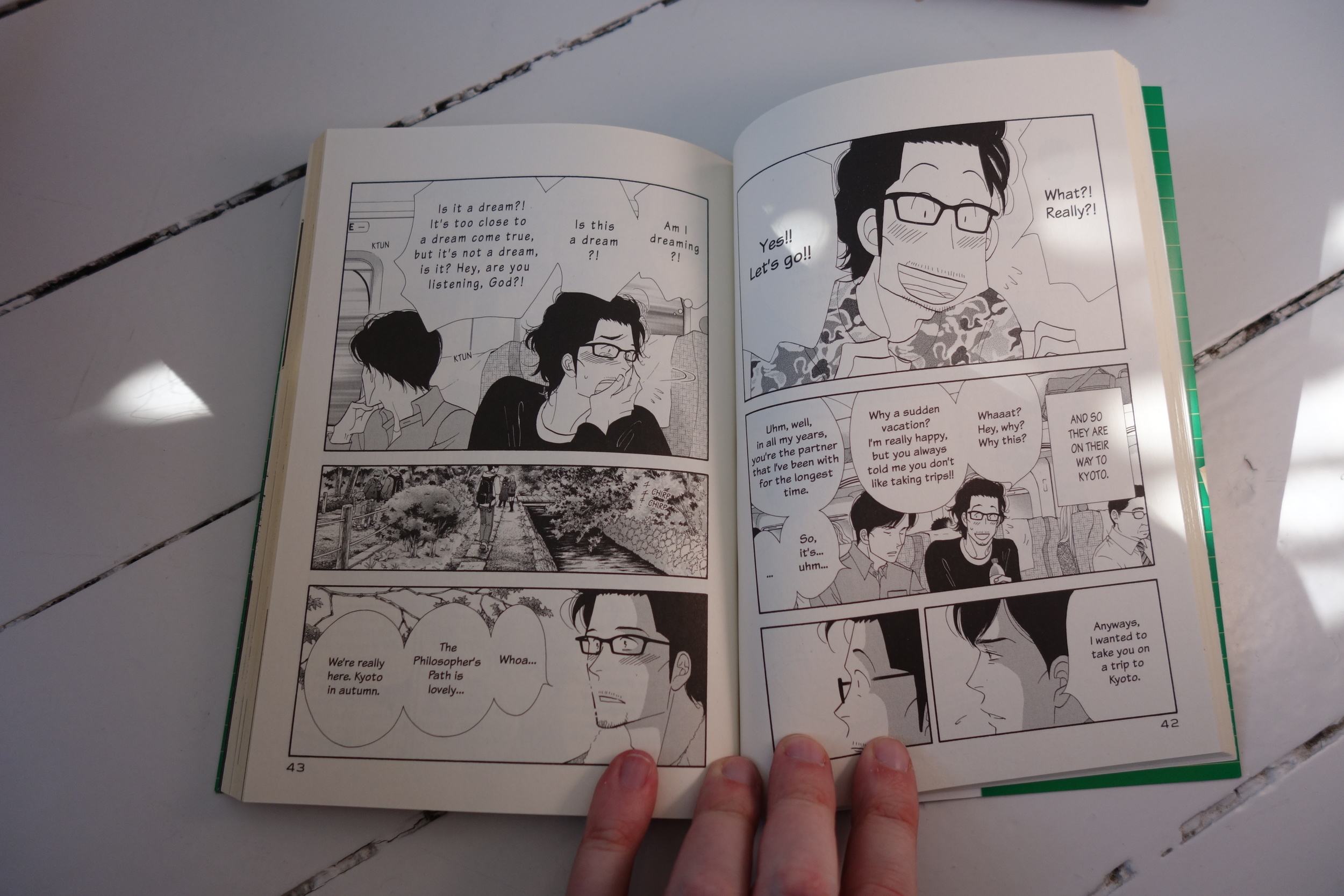
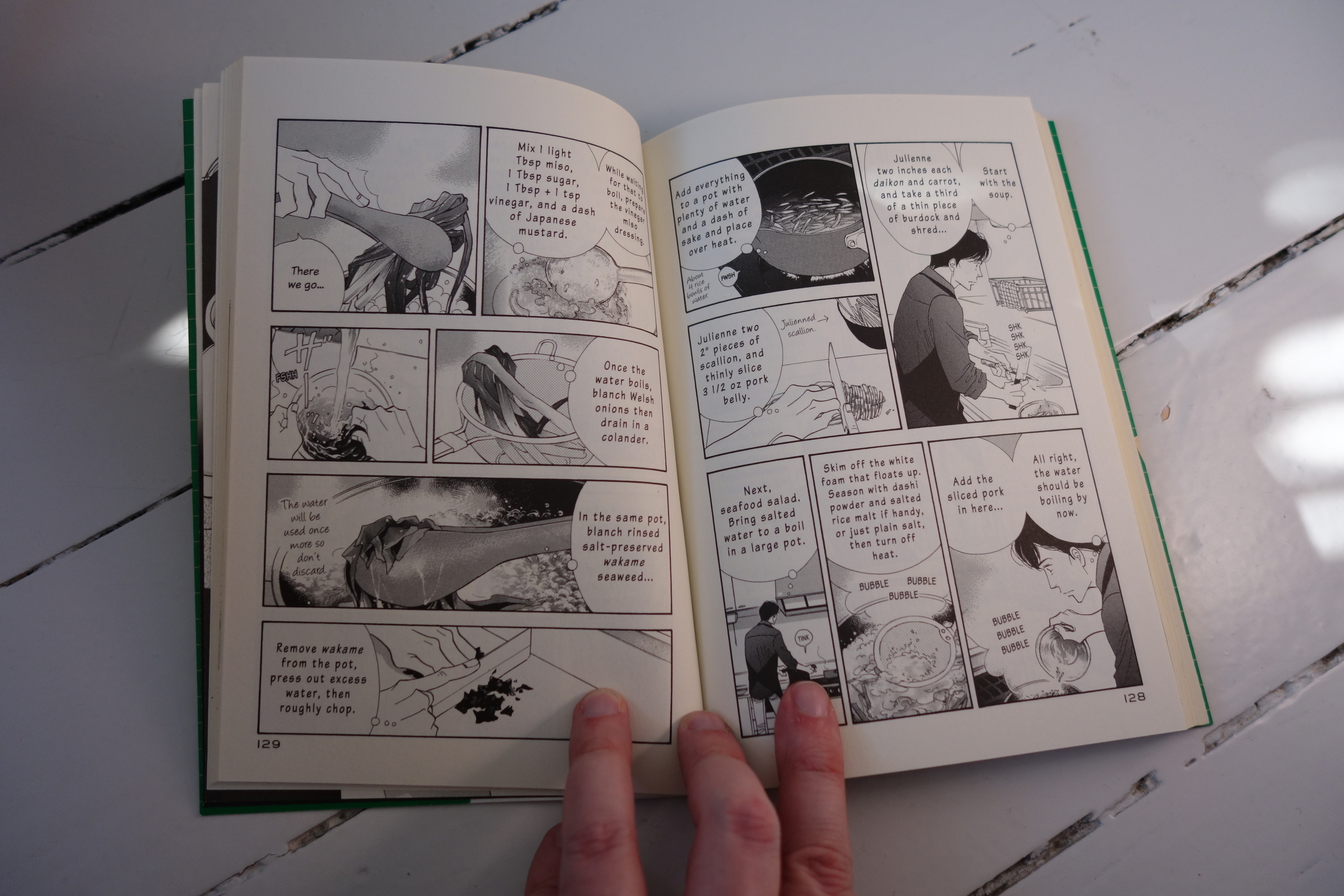
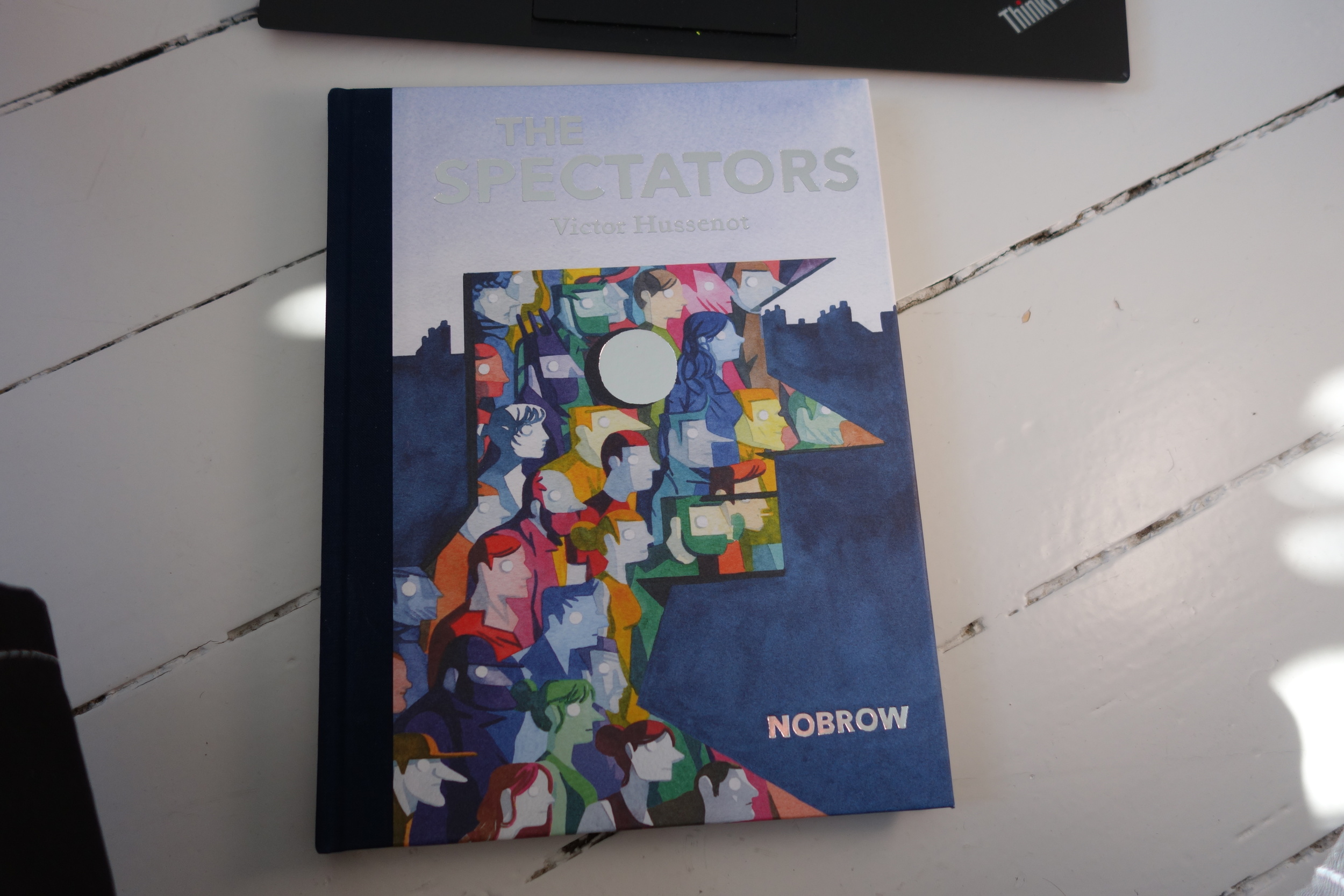
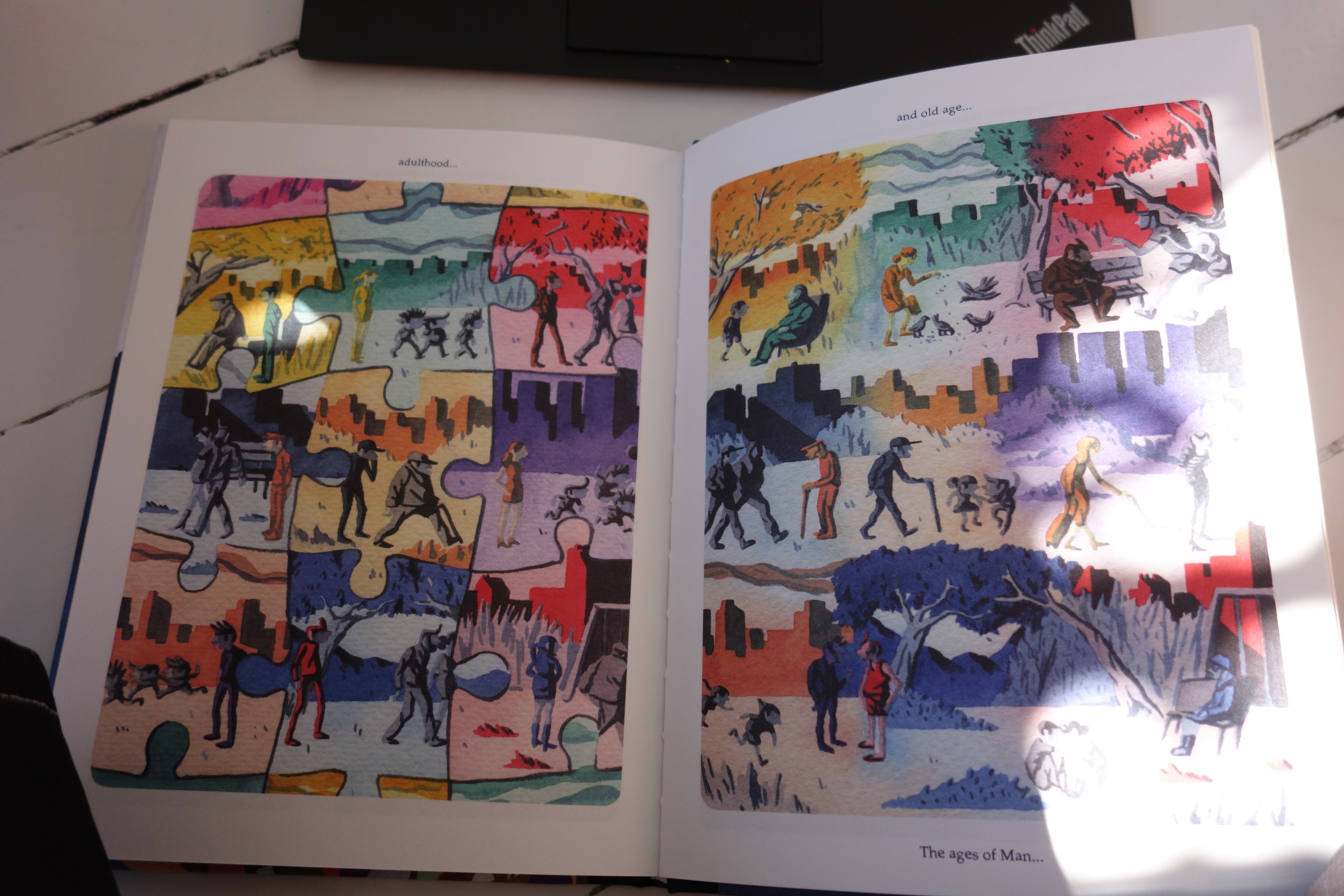

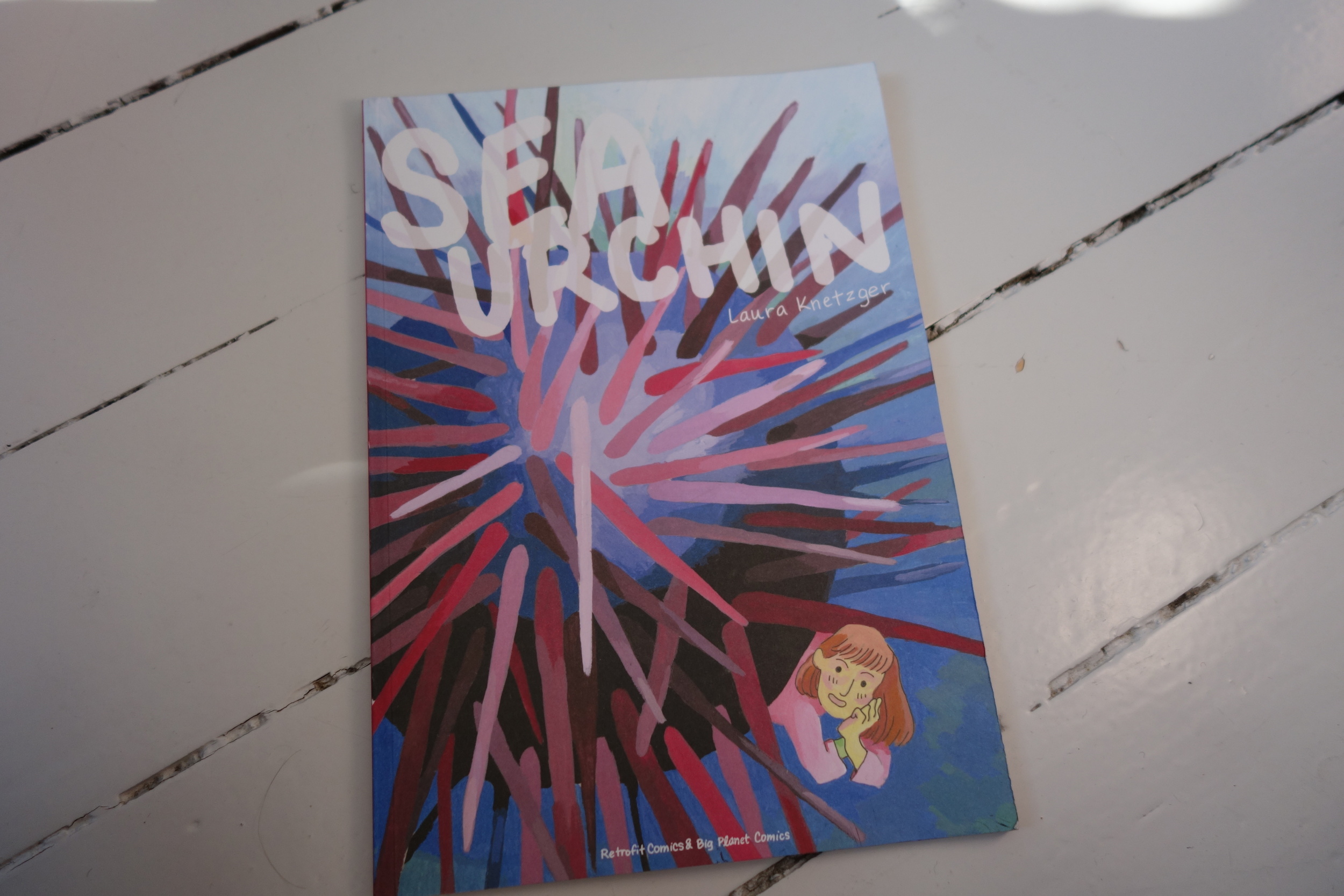

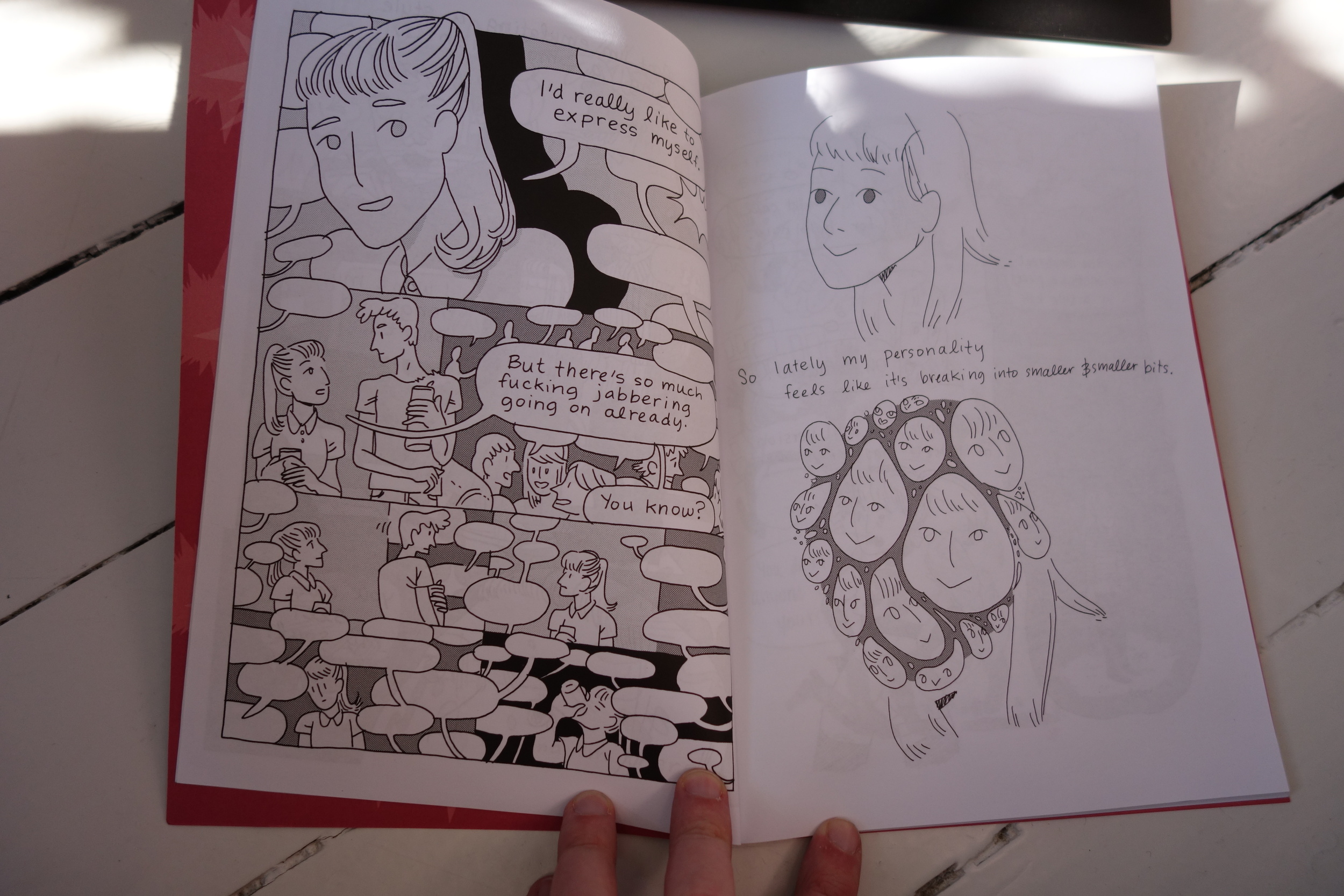
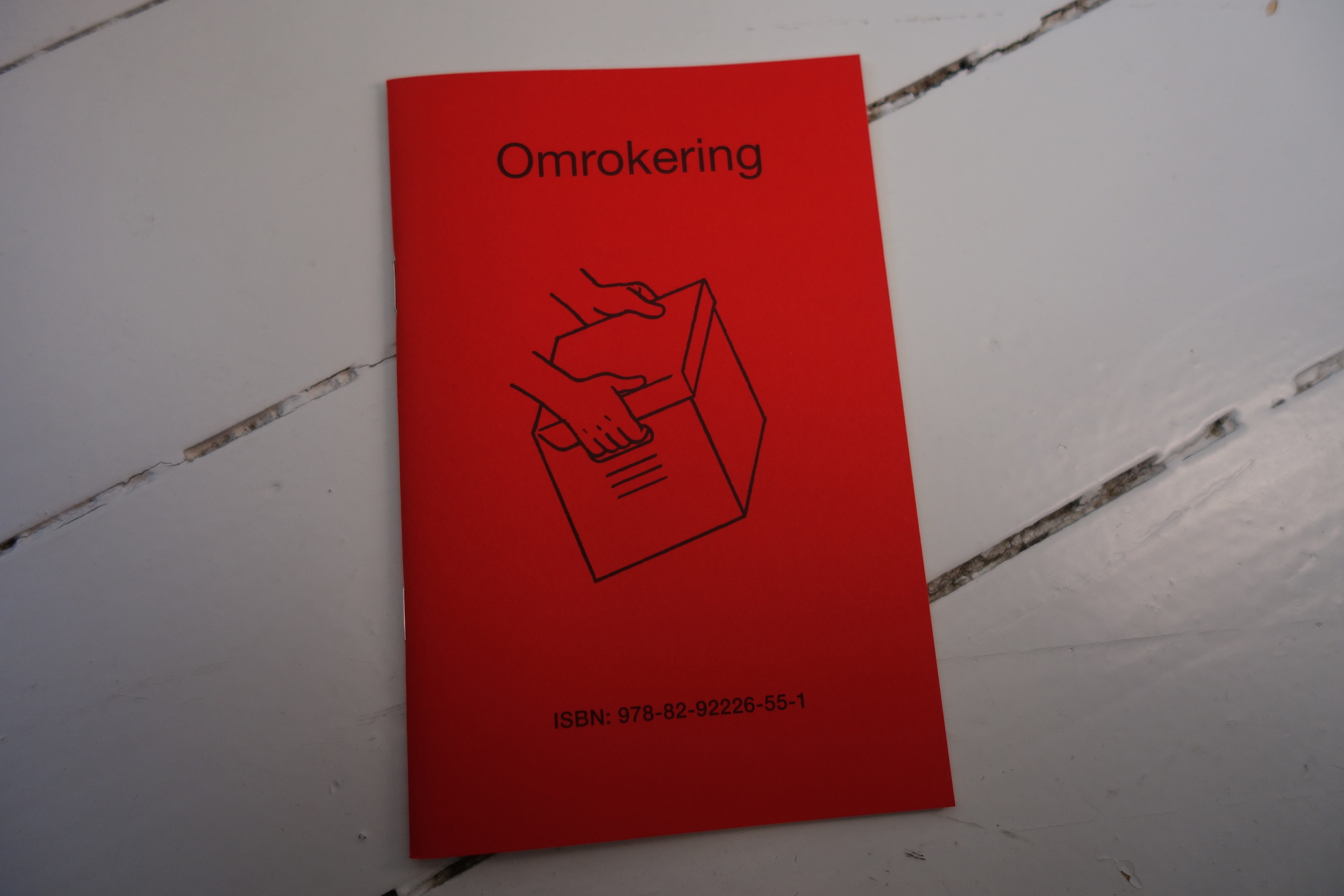

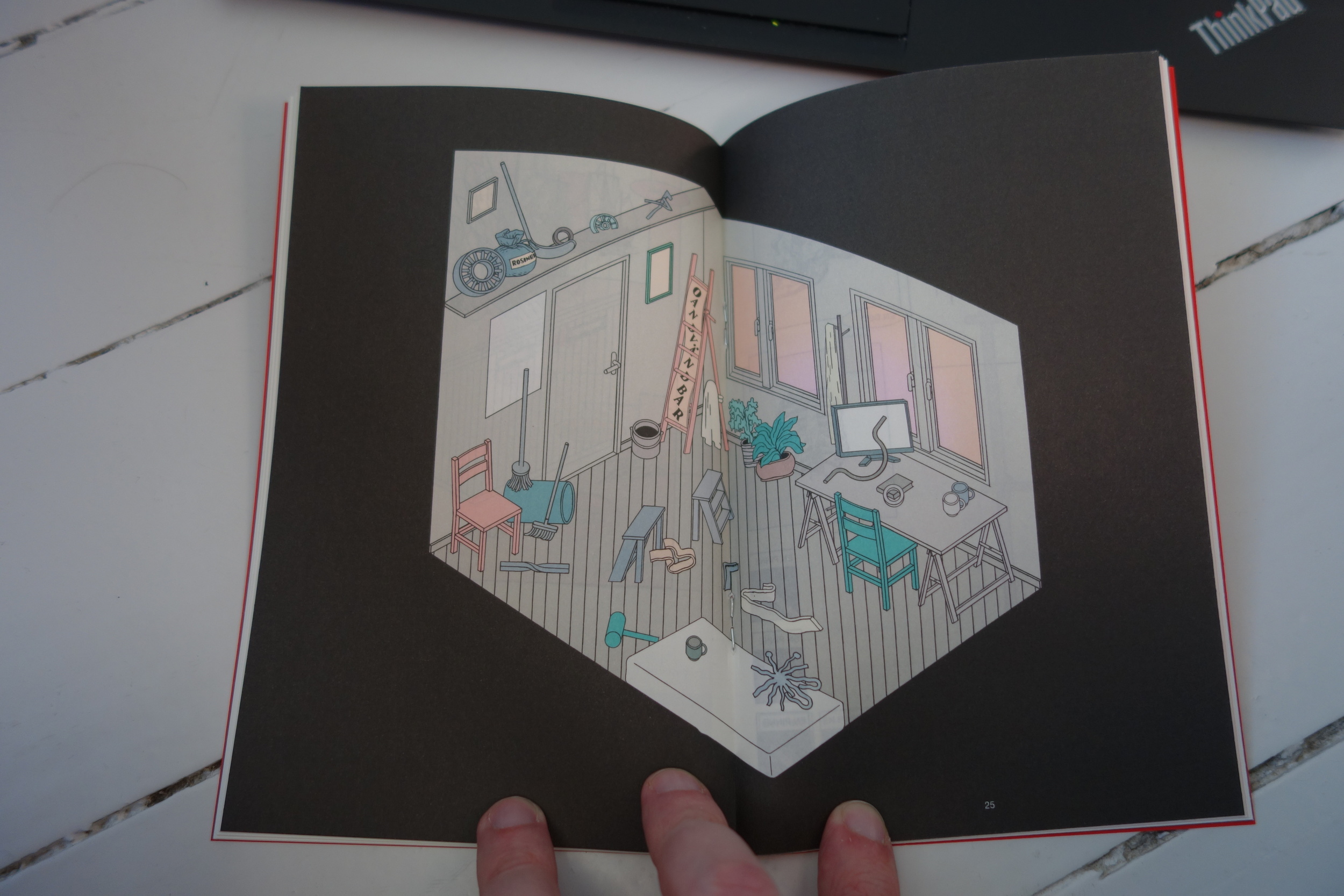
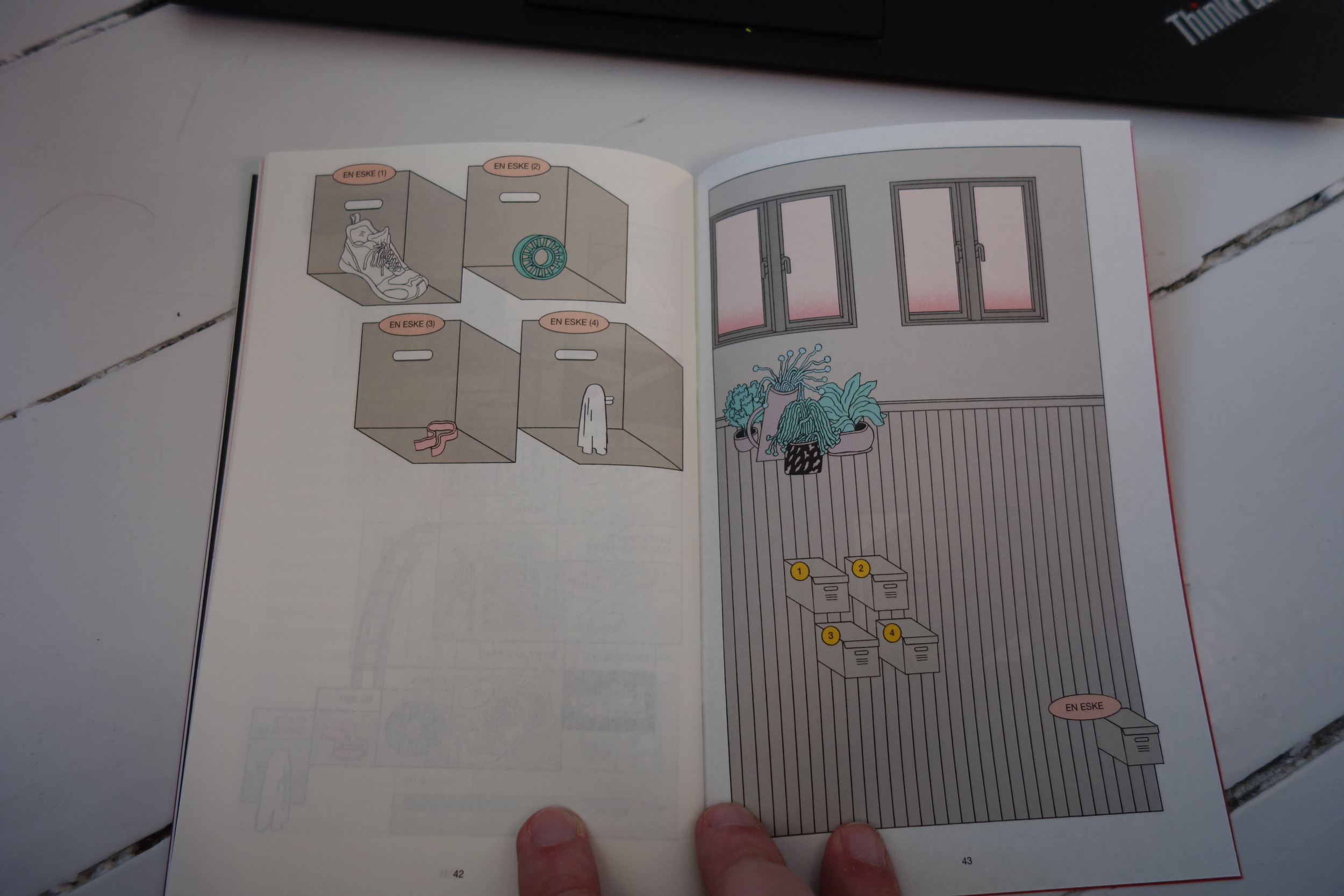
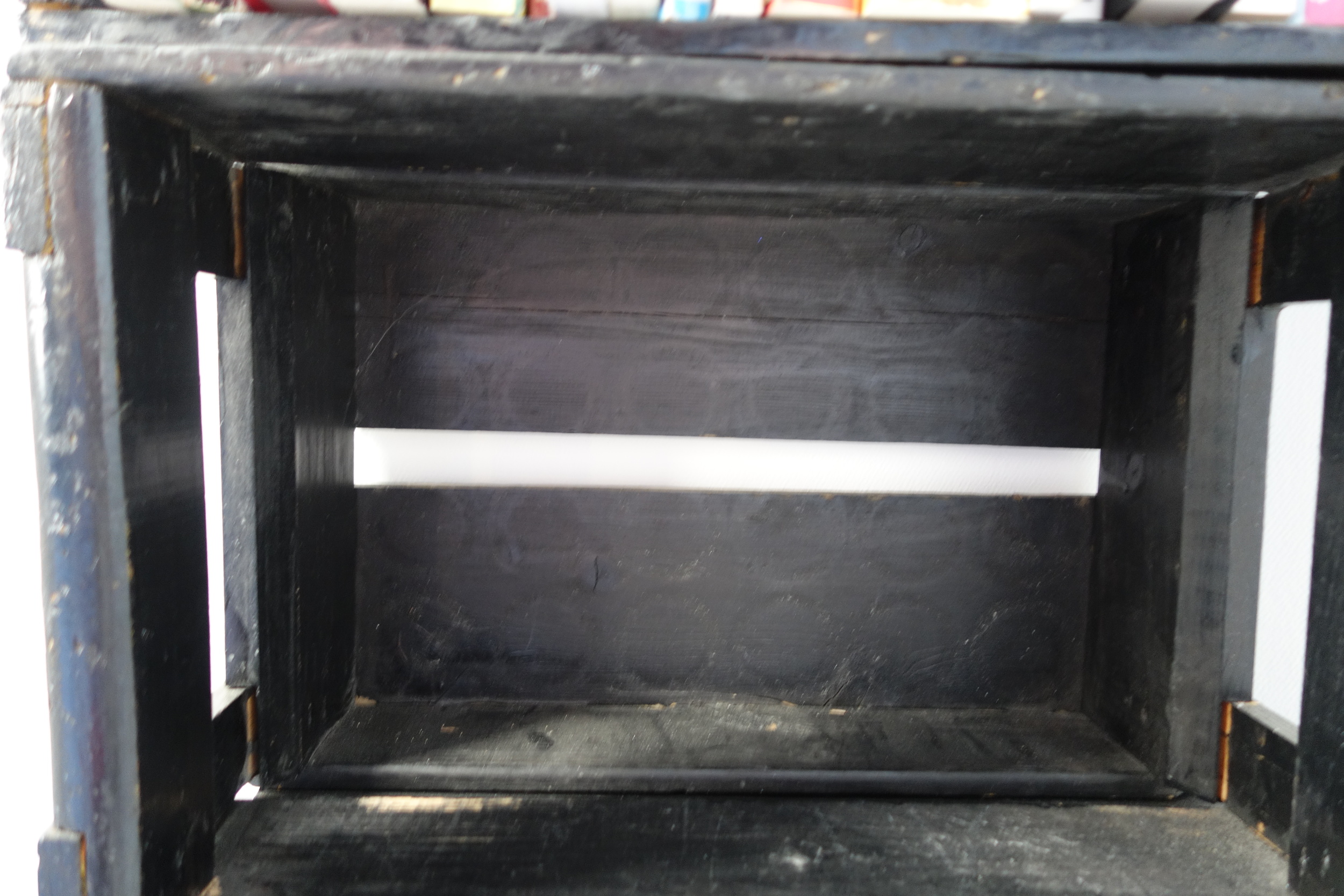
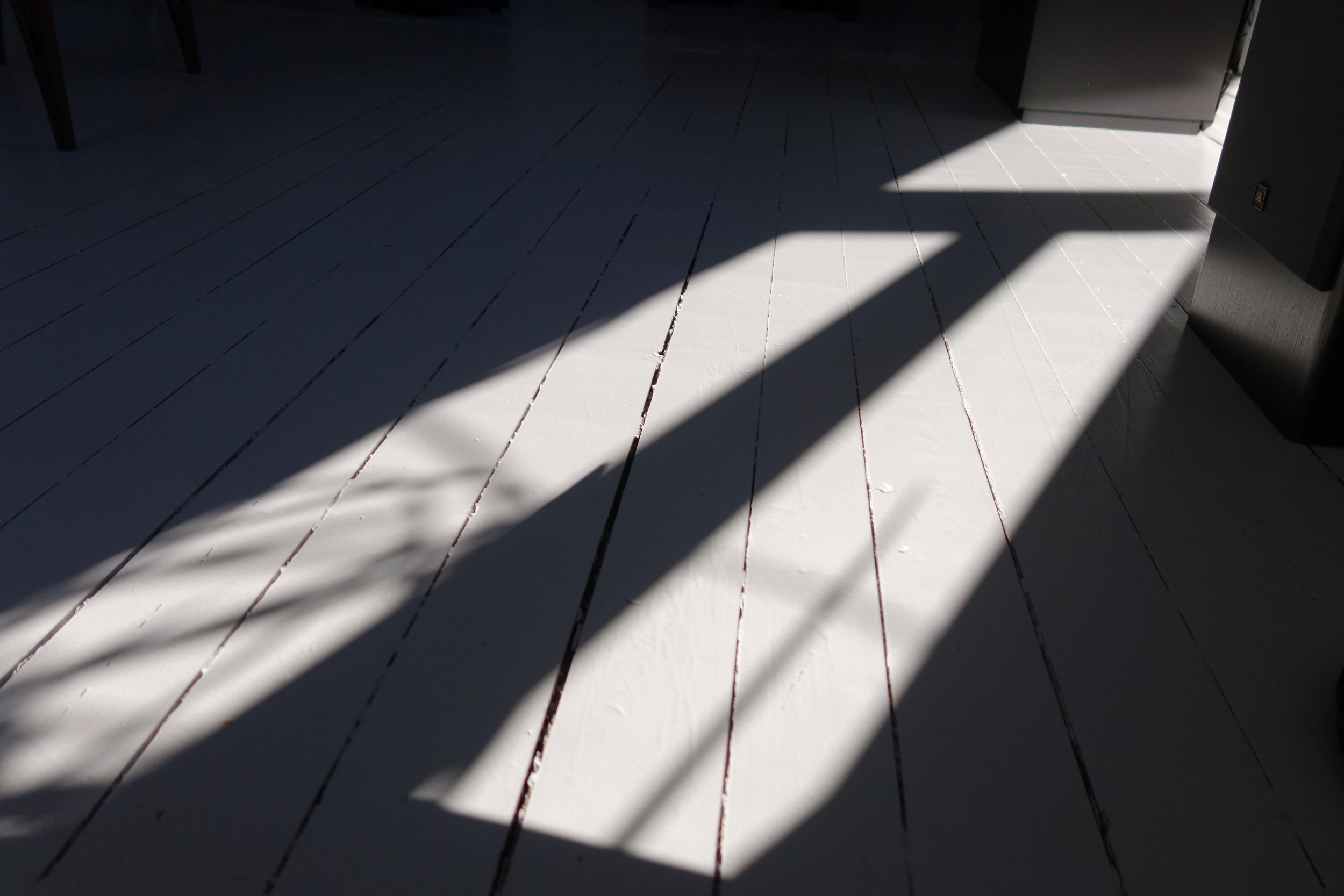
Thanks for including me on the list. I feel compelled to assume all of the responsibility for the editorial direction. The book was nearly done when I submitted it to First Second and they gave me complete freedom on how it was finished. I’m sorry you think Last of the Sandwalkers is my worst book, but I have no desire to make the same book over and over again. I wanted to write about beetles but beetles aren’t social insects, so had to create a society for them. I felt it was full of a lot of the themes of family and gentle humor found in most of my stuff. The story itself parallels the voyage Darwin took from his island oasis into an unknown world. He also met resistance from the scientific elite (his nemesis being Dr. Owen). Not sure I remember any actual hand-wringing, but there are bad people in the world and I don’t think Owen was a caricature at all. Frankly, I wanted to try something new. I wanted to write the kind of adventure science comic I wish had existed when I was a kid. You certainly don’t have to like, but you should blame me for that and not First Second. This was the book as I envisioned it and I’m very proud it of the art and story. Cheers,
Jay